- 18/1/11
- 19,847
- 433
- 83
*******************************************************
ATTENTION: If you don’t have DEEP ENOUGH KNOWLEDGE about Swan Neck devices. Before reading this Thread Part II, in order to understand it properly, you should read the Thread Part I:
“SWAN NECK” (Part I)
What is this? How does it work?
A complete technical and theoretical study of the Swan Neck devices installed in watches (gen or replicas)
http://forum.replica-watch.info/vb/showthread.php?t=831645
*******************************************************
 —“RWI EXCLUSIVE AWARD”
—“RWI EXCLUSIVE AWARD”
“SWAN NECK” (Part II)
Does it work in replicas?
Quality, faults and reliability of the Swan Neck devices installed in replicas. Fault percentages statistic summary.
The data to carry out this Thread Part II has been obtained through the observation and study of all PAM replicas fitted by Swan Neck I have been able to see and, mainly, through the enlarged pictures of all replicas fitted by Swan Neck (more than 200 replicas) from the catalogues, dated 20th June 2011, of three Trusted Dealers: Puretime, Times Shop y Replicamake (no TD yet) and two no TD: Trusty Time and Kingwatch. I have also studied many replica QC pics.
The conclusions obtained by this study of pictures are really interesting and even curious.
By this study I have been able to get a very reliable statistic of the situation, dated 20th June 2011, of the Swan Neck devices installed in the current replicas.
In this Thread Part II, I will carry out the analysis of quality, faults and reliability of the current replicas, bearing in mind this picture study of 200 current replicas and I will also add a summary of fault percentages statistic.
The replicas studied in this Thread Part II are the common commercial replicas with replica movements both Asian clone and so-called “Swiss”,which you can find at the web catalogues of the above mentioned dealers. And you could extend this study to all replica catalogues of all good dealers.
Obviously, if a dealer/maker, like DSN for example, sells a replica fitted with a true and real Swiss movement with a gen Swan Neck, this device will work like an original Swan Neck. But it is necessary that the Swan Neck is authentic gen, it would not be valid a real Swiss movement with a replica Swan Neck, because in this case the Swan Neck will work like a replica device. In the same way in a replica movement fitted with a gen Swan Neck we will have an Swan Neck operative like a gen.
Therefore, when we have installed an authentic gen Swan Neck device in a replica, we can expect a fully working Swan Neck device throughout the regulation field.
Anyway, that will be a very low percentage of the commercial replicas in the market and thus we will focus this study on common replicas above mentioned.
In order to remember the components of a Swan Neck device and a watch regulator as a whole, we are repeating below the FIGURE 4 of the Thread Part I, where a Swan Neck device can be observed (circled in yellow) applied to a conventional regulator (circled in red). In that figure we are indicating the names that we will use over this study.
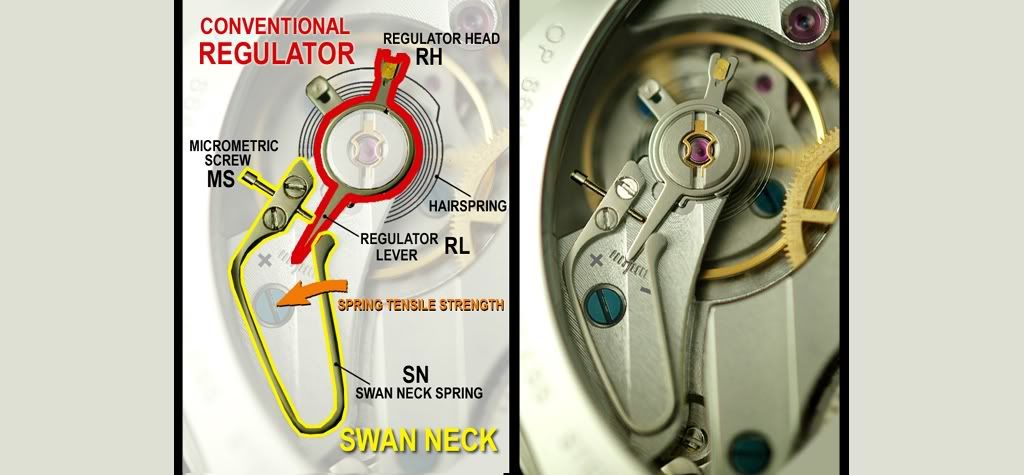
FIGURE 4 - SWAN NECK DEVICE APPLIED TO A CONVENTIONAL REGULATOR
We must also remember from the Part I the mandatory condition for a functional Swan Neck device as follows:
MANDATORY CONDITION: The regulator lever RL must remain always, throughout its working field, pressed against the tip of the screw MS, due to the pressure made by the Swan Neck spring tensile strength. In this way the established adjustment position is firmly maintained.
NOTE:
The pictures we will show below are almost all enlarged pictures from the catalogues of the 200 replicas studied, also from QC pics and some are from other sources. Therefore, the quality is sometimes not as good as it would be desirable, but they can give good idea of ??what we want to display.
11 – FAULTS OF SWAN NECK DEVICES INSTALLED IN REPLICA WATCHES
Firstly, I want to clarify that this is not a direct attack against the quality of existing replicas or against the replica market. I've always been a big fan of watches, and I don’t buy a gen watch many years ago. I currently only buy replicas. Their quality, bearing in mind the price, is absolutely amazing. I'm really pleased with my replica watches and I think it would not be able to spend a lot of money to buy a gen. I'm a big fan and supporter of replica market.
But, we must not make a mistake expecting from the replicas something that they cannot give us at their level of price.
It is important to note that the faults in Swan Neck devices occur likewise with both Asian 6497 movement and the so-called "Swiss ETA" 6497, and with similar percentages.
This matter will be clearly explained in the Thread Part III devoted to statistical analysis.
We will just talk about the faults to be found in Swan Neck devices fitted in the current replicas. Let’s bear in mind that the regulator must also work properly to combine its function with the Swan Neck device. But the analysis of the regulator is not the purpose of this study. Therefore, we will assume that the regulator is working properly.
11.1 – THE LACK OF ELASTICITY OF THE SWAN NECK SPRING – “THE HIDDEN FAULT”
The lack of elasticity of the Swan Neck spring is the more common fault in the Swan Neck devices of replica watches. We could call it “hidden fault”, because, in many cases and some positions of the regulator lever RL, it cannot be detected and we need to vary the position of the regulation to display the default. But, although it is not visible, the fault exists.
This lack of elasticity of the Swan Neck spring causes that the spring doesn’t have enough tensile strength to assure that the regulator lever RL is always pressed against the tip of the screw MS from the position (-) SLOWER to (+) FAST and backwards.
It is not easy to find a Swan Neck spring in replicas with the necessary elasticity throughout the working fieldof the regulator, and it is very common to find Swan Neck springs that are originally deformed or that have been deformed when they have been pushed to the position (-) SLOWER and they have not been able to return to positions towards (+) FASTER by not having enough elasticity, leaving the regulator lever RL without pressing against the tip of the screw MS. In this way the Swan Neck device leaves to be operational as a whole.
Therefore, we can say that it is very difficult to find a replica Swan Neck spring functional throughout the working regulation field, from (+) FASTER to (-) SLOWER and backwards.
The reasons are simple and are based on the relatively high cost of manufacture, assembly and quality control of an appropriate Swan Neck spring.
Making a high quality Swan Neck spring requires a group of relatively expensive processes (at replica market level) and with very specific special materials.
The Swan Neck spring shall be manufactured from a special alloyed steel for springs. Usually this spring is made from a sheet of this special spring steel like raw material. This sheet has already been drilled with some holes that the spring will need and has already received a tempering thermical treatment, in order to acquire the exact hardness that the spring will need to fulfill its elastic mission with the due capacity of recovery. This sheet of steel cannot be processed by the cheap die-cutting process due to its hardness. A slow and expensive process called “spark erosion” is necessary to “cut” the swan’s neck shape on the hard steel sheet. On the picture below you can see the cutting process of a Swan Neck spring original of GLASHÃœTTE. On the center it is shown the Swan neck spring, on the right the very expensive “spark erosion” machine, on the left some steel sheets after the “spark erosion” process (you can observe the swan’s neck forms in the “cuts”). Once finished the machining process it begins a very delicate hand made process of edges bevelling and surface polishing.

CUTTING PROCESS OF AN ORIGINAL “GLASHÃœTTE” SWAN NECK SPRING BY “SPARK EROSION”

HAND MADE POLISHING OF AN ORIGINAL “GLASHÃœTTE” SWAN NECK
SPRING
This is just the manufacture process but you need also to apply an appropriate assembling process and a quality control accordingly.
The cost of a Swan Neck spring, manufactured and assembled by this process, in Europe or USA can be about the value of a complete high quality replica. In China maybe placed in 20-25% of the whole replica cost. These estimations are obviously approximate.
Usually the Swan Neck springs installed in existing replicas are made ??from standard "stainless steel". Most likely, they are manufactured directly by cheap die-cutting, from a sheet of standard “stainless steel”, with its final form. They cannot receive a tempering because the standard SS does not allow thermical treatments. So the resulting Swan Neck “spring”, really, is not a true spring, but a piece of standard SS with the form of a Swan Neck spring, but without the necessary elasticity to fulfill its mission.
Therefore we cannot expect from the Swan Neck springs installed in the current replicas an elastic operation throughout its working field.
At best, a replica Swan Neck spring could be effective in a 20-35% of the total regulation field. Besides, with few guarantees of working reliability, because if you distort this spring too much, it will not be able to retake its initial shape.
Sometimes this lack of elasticity is easily detected when you are studying Swan Neck devices of replicas either physically or through the pictures from catalogues or QC pics. When the regulator lever RL is not pressed between the tip of the screw MS and the Swan Neck spring, we can say, directly, that the Swan Neck spring tensile strength is not strong enough for this mission.
We can observe four possible positions:
- The regulator lever RL doesn’t touch the screw MS.
- The regulator lever RL doesn’t touch the Swan Neck spring.
- The regulator lever RL doesn’t touch either the screw MS or the Swan neck spring.
- The regulator lever stays pressed correctly between the Swan Neck spring and the tip of the screw MS.
We will analyze bellow the four possible positions:
- The regulator lever RL can stay against the Swan Neck spring, but if this spring has not the tensile strength enough the regulator lever RL will not reach the tip of the screw MS, as shown in the replicas of FIGURES 8.A and 8.B.
VERY IMPORTANT TIP: To quickly see and understand all the pictures shown in this study, we recommend to search directly the regulator lever RL (dagger or needle) and then look at each side what is the position of the Swan Neck spring and the tip of the secrew MS.
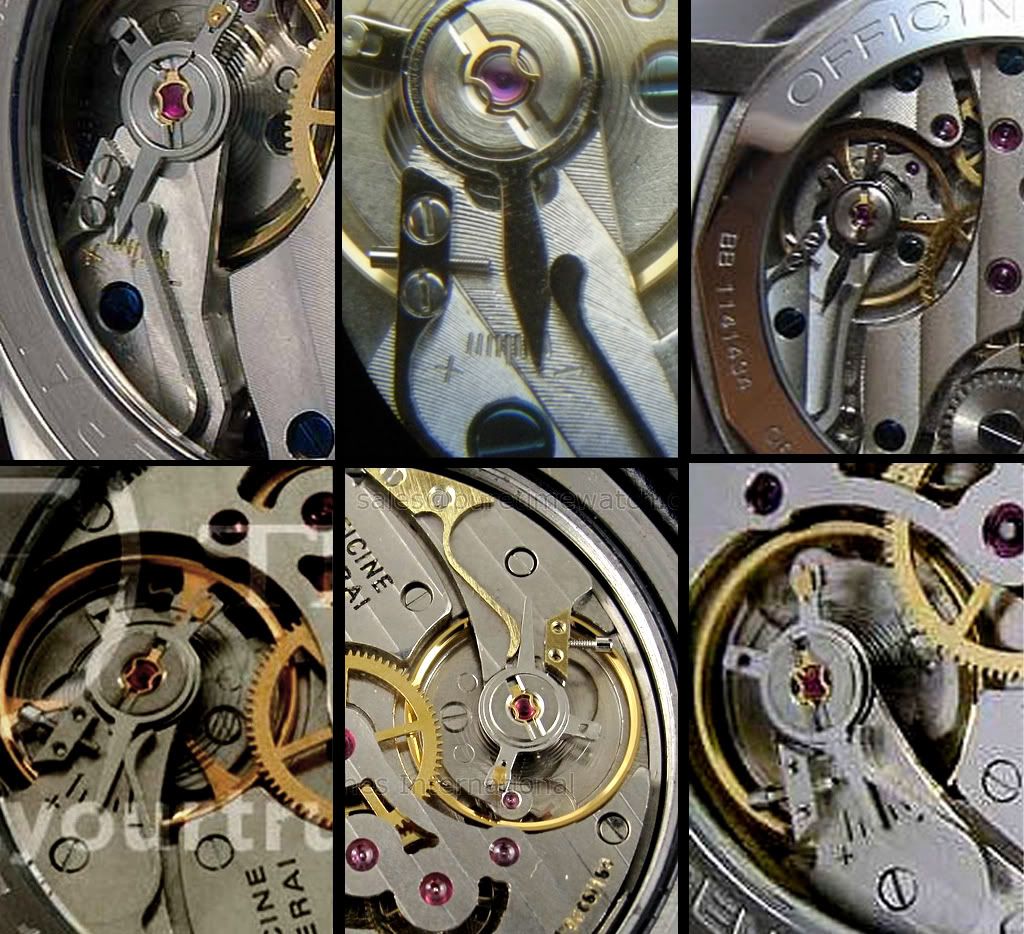
FIGURE 8.A – THE REGULATOR LEVER RL DOESN’T TOUCH THE TIP OF THE SCREW MS
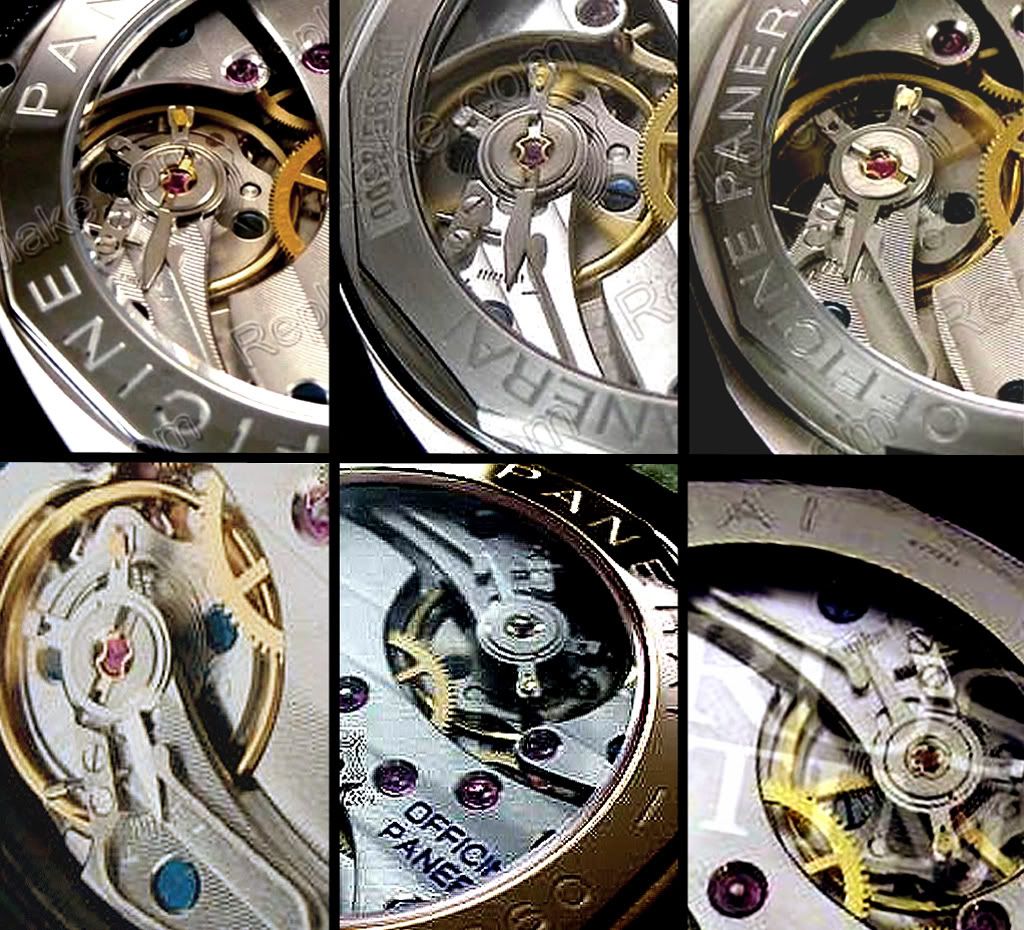
FIGURE 8.B - THE REGULATOR LEVER RL DOESN’T TOUCH THE TIP OF THE SCREW MS
- The regulator lever can stay against the tip of the screw MS, but if the Swan Neck spring is distorted, without elasticity, it remain “open”, it has not the tensile strength enough. This spring will not go as far as to reach the regulator lever RL, as shown in the replicas of FIGURE 9
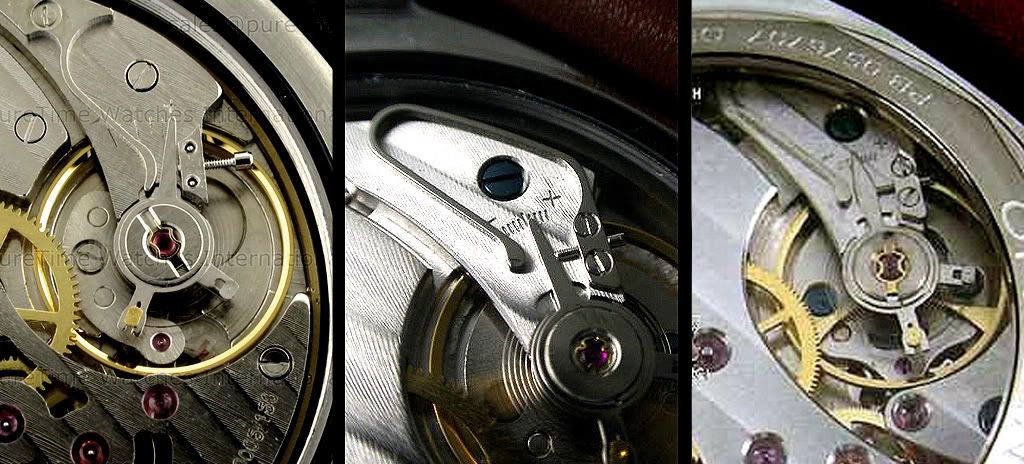
FIGURE 9 - THE SWAN NECK SPRING DOESN’T GO AS FAR AS TO REACH THE REGULATOR LEVER RL
- The regulator lever RL can stay at an intermediate position, touching neither the screw MS nor the Swan neck spring. The Swan Neck spring is distorted, without elasticity, and it remain “open”. This spring will not go as far as to reach the regulator lever RL, and then the regulator lever RL will not touch the tip of the screw MS either. As shown in the replicas of FIGURE 10.
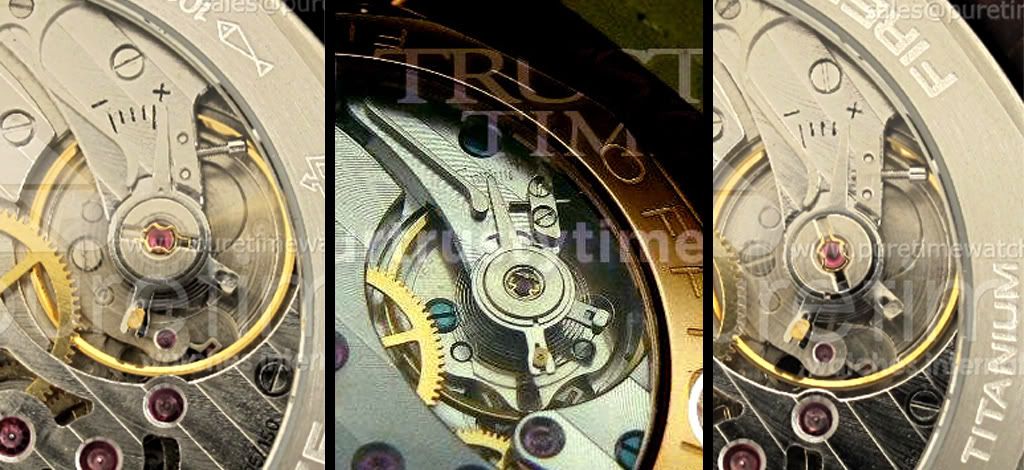
FIGURE 10 - THE REGULATOR LEVER RL DOESN’T TOUCH EITHER THE SCREW MS OR THE SWAN NECK SPRING.
- Finally, the regulator lever RL can stay pressed correctly between the Swan Neck spring and the tip of the screw MS.
Seemingly, that would indicate a fully functional Swan Neck device, but really this is a situation that can not be maintained throughout regulation field from (+) FASTER to (-) SLOWER, due to the low elastic properties of the Swan Neck spring.
This statement can be proved though the observation of many situations like those that we can see below in the FIGURES 11.A, 11.B, 11.C and 11.D
Each of the FIGURES 11 consists of two pictures (left and right) that correspond to the same replica model, from the same catalogue, but just with different straps. Thus, the left and right replicas have the same structure, case, movement, etc…only the strap changes.
However, in these FIGURES 11.A, 11.B, 11.C and 11.D you can see in the picture on the left side a seemingly working Swan Neck device. But the picture on the right side, of the same replica model, shows a Swan Neck spring without elastic properties, which has been distorted and remains “open” with no tensile strength. We can expect that the Swan Neck spring on the left, since it is from the same model of replica, will have the same problem when is pushed to (-) SLOWER, and even that it doesn’t reach (+) FASTER, because doesn’t have enough elasticity.
We repeat: each pair of pictures corresponds to the same replica model, with the same case and movement.
Unfortunately, you can observe this situation very often for the same model of replica.
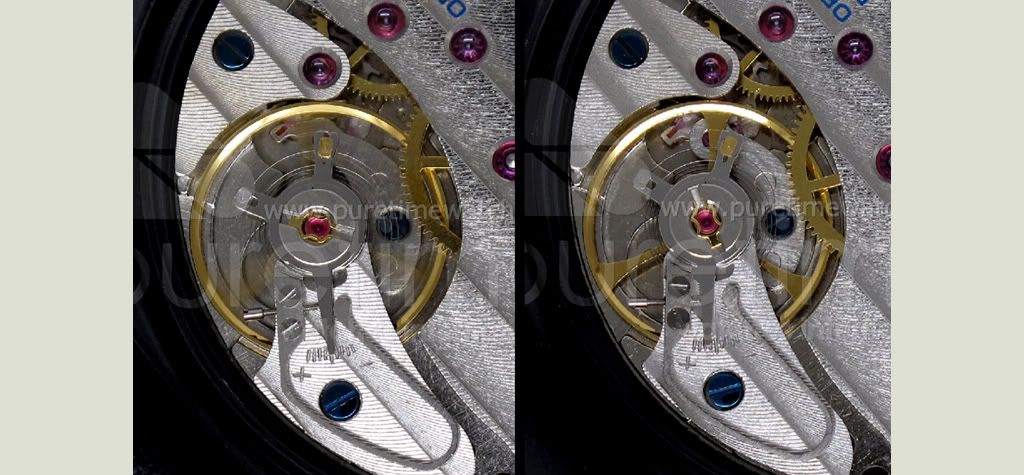
FIGURE 11.A – COMPARISON OF TWO REPLICAS OF THE SAME MODEL–THE SWAN NECK SPRING HAS NOT ENOUGH ELASTICITY
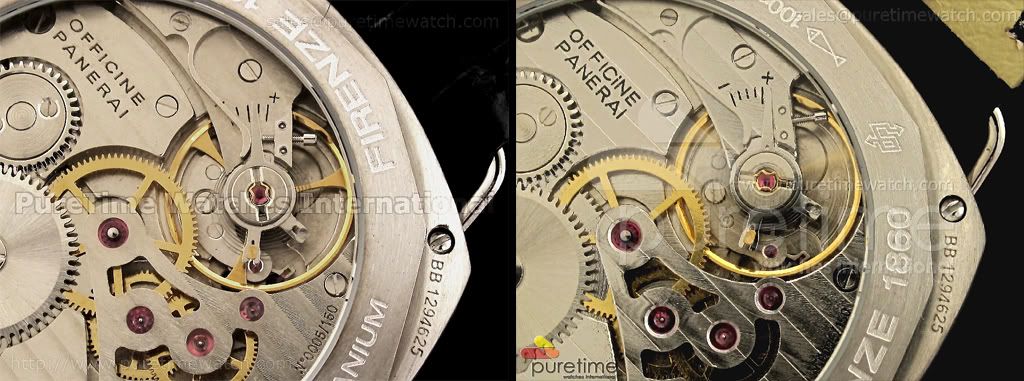
FIGURE 11.B - COMPARISON OF TWO REPLICAS OF THE SAME MODEL–THE SWAN NECK SPRING HAS NOT ENOUGH ELASTICITY

FIGURE 11.C - COMPARISON OF TWO REPLICAS OF THE SAME MODEL–THE SWAN NECK SPRING HAS NOT ENOUGH ELASTICITY
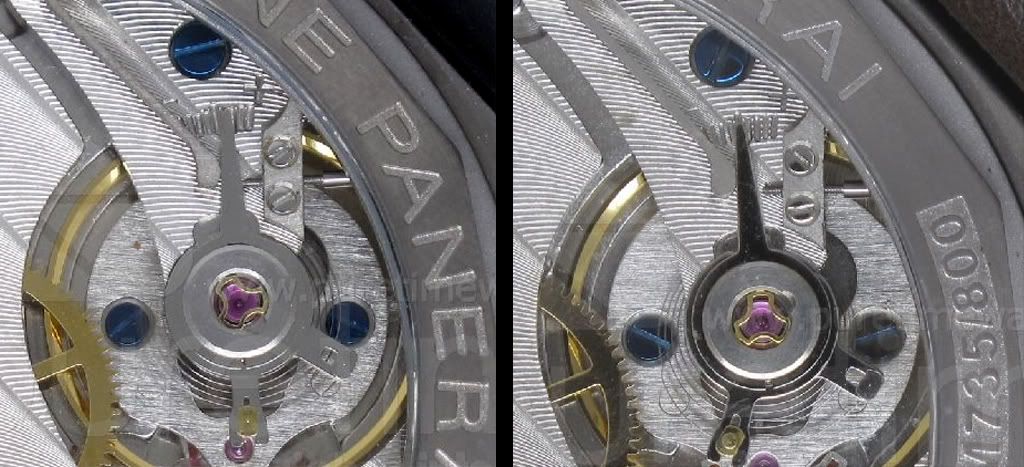
FIGURE 11.D - COMPARISON OF TWO REPLICAS OF THE SAME MODEL–THE SWAN NECK SPRING HAS NOT ENOUGH ELASTICITY
Therefore, although we can find a seemingly working Swan Neck spring, which is properly pressing the regulator lever RL against the tip of the screw MS, this is an unstable situation, because if you change the regulation position, tightening or loosening the screw MS, in some point the Swan Neck spring will stop working or will become distorted definitively, due to its lack of elasticity.
In the FIGURE 12 it is possible to see other two replicas of the same model. You can see, clearly, in the picture on the left side a seemingly working Swan Neck. But the picture on the right side, of the same replica model, shows that the replica doesn’t have screw MS (another possible fault for lack of QC) and nevertheless the Swan Neck spring, due to not have enough elasticity, has not folded towards the position (+) FASTER that should be the correct working of this spring.
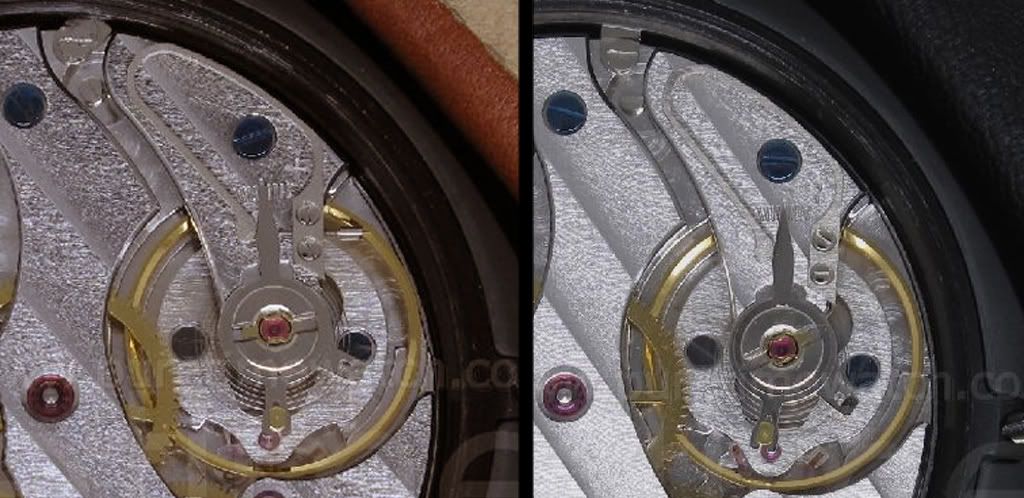
FIGURE 12 - COMPARISON OF TWO REPLICAS OF THE SAME MODEL–THE SWAN NECK SPRING HAS NOT ENOUGH ELASTICITY
To illustrate above mentioned, please read below indiacted posts placed after the publication of this thread:
http://forum.replica-watch.info/vb/showthread.php/thanks-coldi-87007p4
Posts #34-#35-#36-#37
Therefore, due to the used materials and the manufacturing processes and QC applied, we neither can nor must expect that the Swan Neck springs of the current replicas are working throughout the field of regulation necessary. At best, we can expect that they work on 20-35% of the total field.
11.2 - MICROMETRIC SCREW MS WITHOUT SUFFICIENT LENGTH
The micrometric screw MS must have sufficient length to reach the whole working field of the regulator lever RL, and to be able to push this lever from the position (+) FASTER to the position (-) SLOWER.
In the replicas studied, to date 20th June 2011, only 6% approx. of the replies had a screw MS functional in more than 90% of the whole regulation field, 36% approx. had a screw MS valid between 70-90 % of the whole field. 56% approx. had a screw MS so short that was operative in less than 70% of the whole regulation field and 2% approx. didn’t have screw MS.
In the last replica series of PAM111-112-177, which came to the market at the end of June 2011, although they do not have a fully working Swan Neck, improvements are observed at this regard, and have screws MS that come almost always to more than 75 % of the whole regulation field and many of them overcome 80-90 % and look more cosmetically correct(despite the fact that Puretime has in its catalogue all the new replicas PAM111 with the same movement picture and with short screw MS). We will discuss about that in the Section 17 of this Thread, relating to the fault statistics summary.
Several examples of screw MS without sufficient length can be seen in the FIGURES 13.A and 13. B, in these figures you can observe that despite the screw MS is tightened to the maximum the regulator lever RL doesn’t reach the position (-) SLOWER.
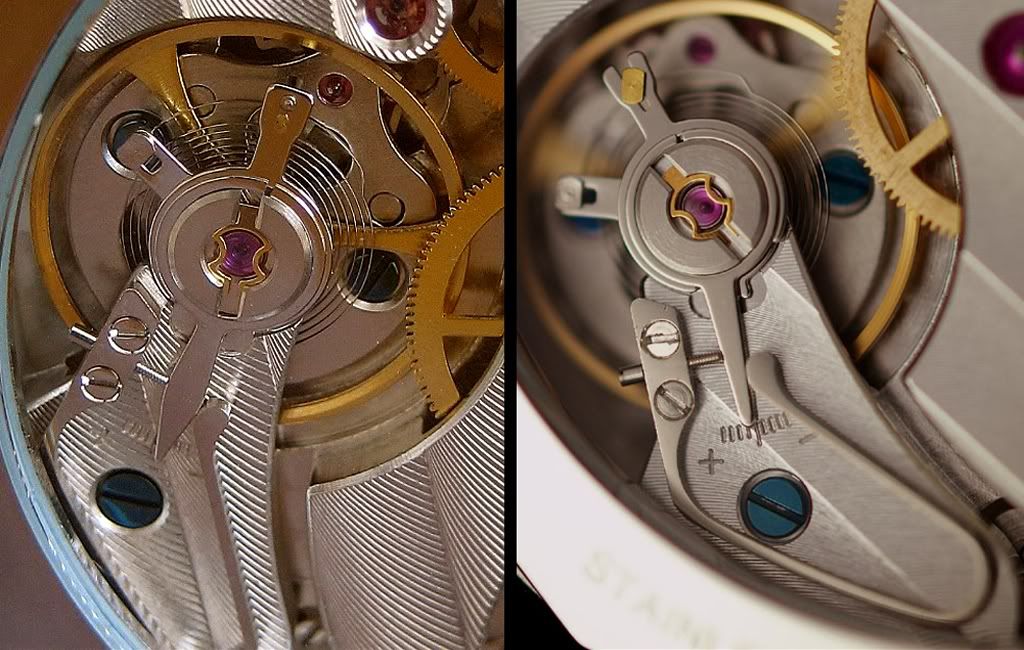
FIGURE 13.A - SWAN NECK DEVICES WITH MICROMETRIC SCREW WITHOUT SUFFICIENT LENGTH
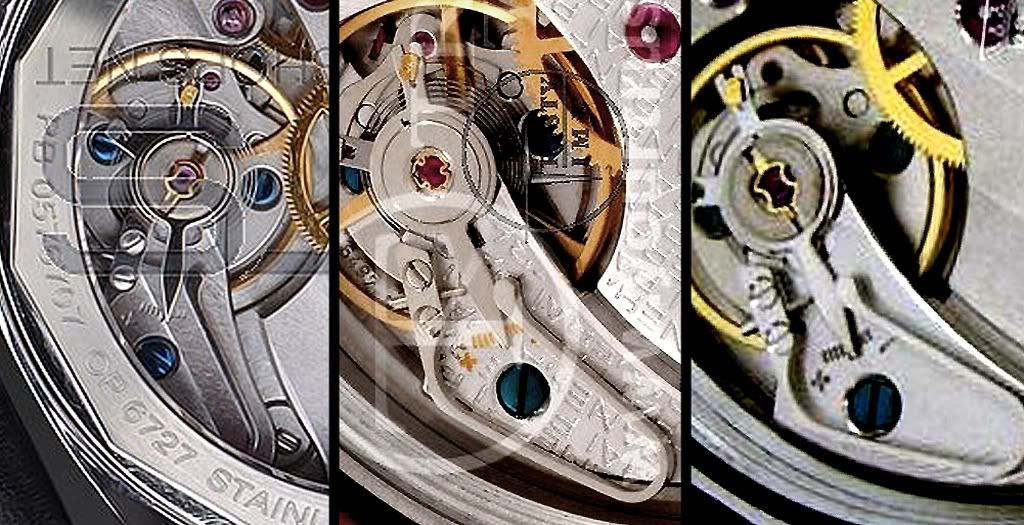
FIGURE 13.B - SWAN NECK DEVICES WITH MICROMETRIC SCREW WITHOUT SUFFICIENT LENGTH
In the FIGURE 13.C we can see a replica watch which Swan Neck device has a screw MS extremely short
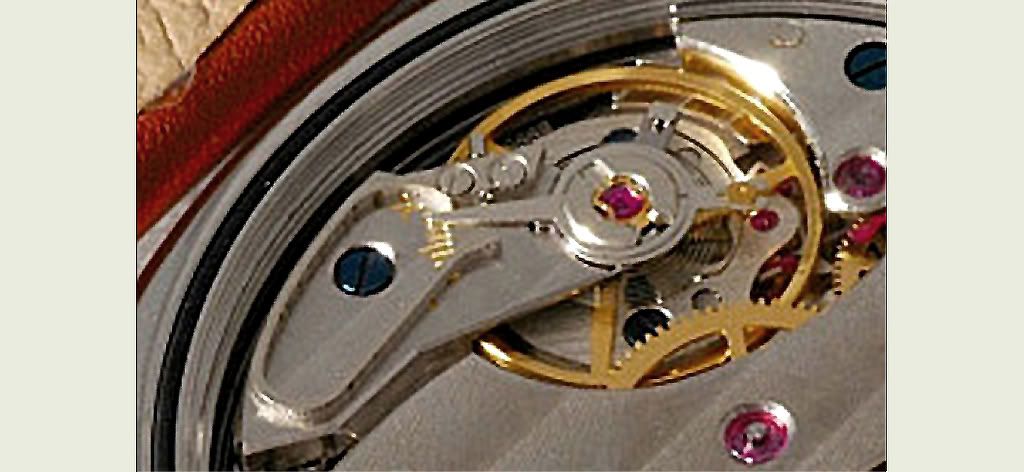
FIGURE 13.C - SWAN NECK DEVICE WITH MICROMETRIC SCREW EXTREMELY SHORT
ATTENTION: As we have already advanced previously, in some replicas (aprox. 2 %) is even possible that the screw MS is missing, surely by mistake or lack of QC. You can observe this fault in the four pictures of the FIGURE 14.
In replicas without micrometric screw MS it is not necessary to comment that the Swan Neck device is purely cosmetic.
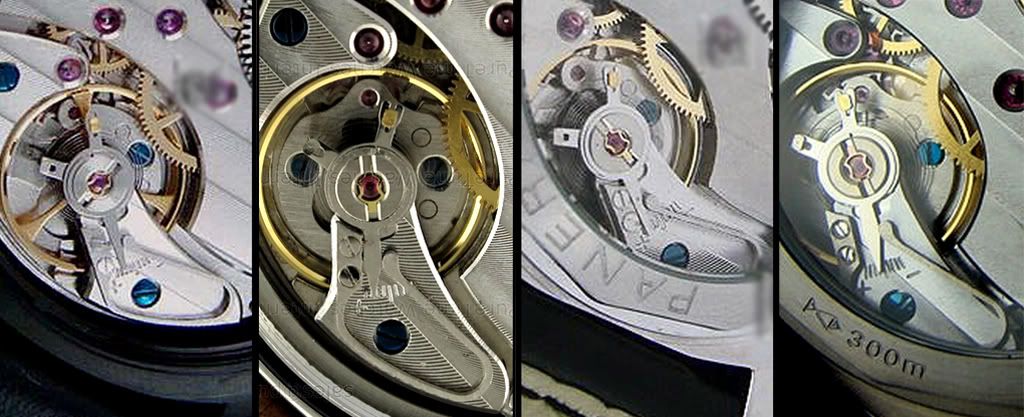
FIGURE 14 - SWAN NECK DEVICES WITH MISSING MICROMETRIC SCREW
11.3 – THE THREADED HOLE FOR THE SCREW MS IS NOT ALIGNED PARALLEL TO THE SURFACE OF THE "BALANCE COCK"
The threaded hole to insert the screw MS must be well aligned, parallel to the surface of the "Balance Cock". Because if the threaded hole is pointing upwards, the screw MS will pass over the regulator lever RL, and will not be able to exert its push mission. And if the threaded hole is pointing downwards, the screw MS will sink to the surface of the "Balance Cock".
In the replicas we can find misaligned screws MS that pass over the regulator lever RL. In the FIGURE 15.A we can observe two cases of misaligned screws, not parallel to the "Balance Cock", which point upwards. In the picture on the right side the screw MS are passing over the regulator lever RL, instead of pushing it. In the picture on the left side, you can see the marks of the misaligned thread through the material of the support of the threaded hole, the screw MS is not yet passing over the regulator lever RL, because it is completely loosened, but when the screw MS is tightened, it will advance and will pass over the regulator lever RL, in the same way that happens in the picture on the right side.

FIGURE 15.A - MISALIGNED SCREWS MS, NOT PARALLEL TO THE "BALANCE COCK" (in the picture on the right side the screw MS is already passing over the regulator lever RL)
In the FIGURE 15.B we are showing two new cases of misaligned screw MS which passes over the regulator lever RL
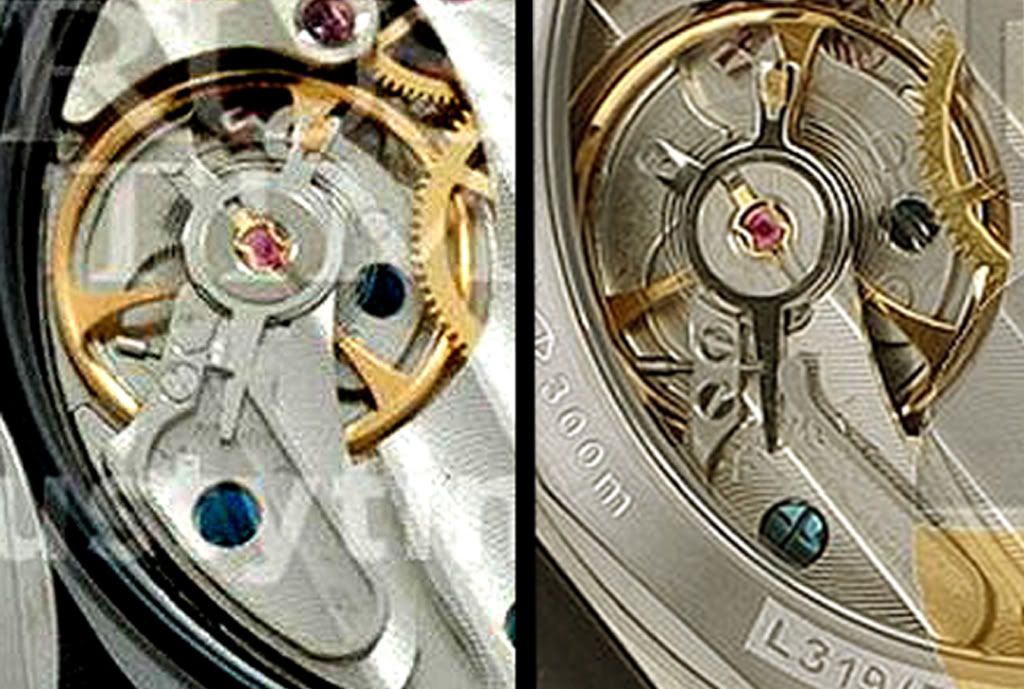
FIGURE 15.B - MISALIGNED SCREWS MS, NOT PARALLEL TO THE "BALANCE COCK" (the screws MS pass over the regulator lever RL)
In replicas with micrometric screw MS passing over the regulator lever RL, it is not necessary to comment that the Swan Neck device is not functional.
11.4 – THE SWAN NECK SPRING DOESN’T REMAIN COMPLETELY FLAT AND DETACHS FROM THE "BALANCE COCK" SURFACE.
The Swan Neck spring must remain completely flat and not to detach from the surface of the "Balance Cock". If the Swan Neck spring doesn’t remain flat, can pass over the regulator lever RL. In this way it will not able to perform its pushing function and will not allow the regulation adjustment.
In the replicas can be found such situations, as shown in FIGURES 16.A and 16.B.
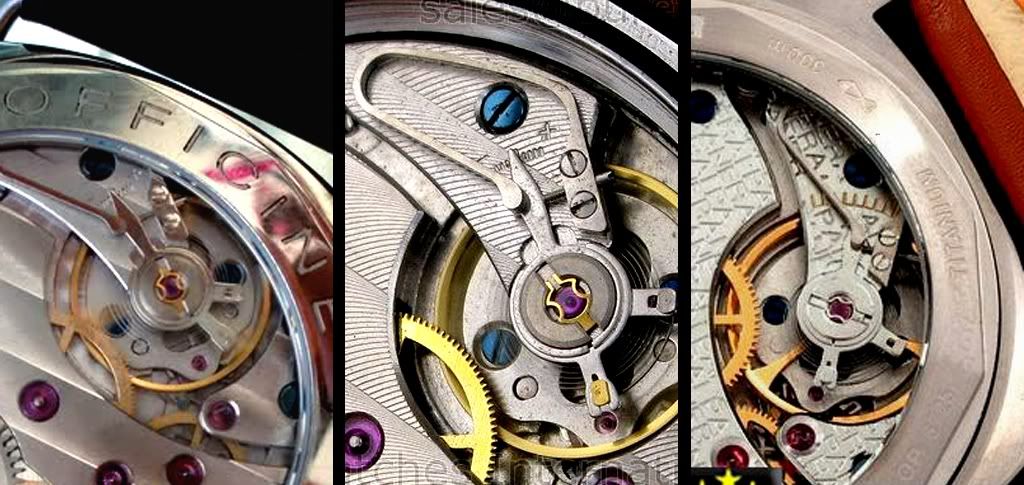
FIGURE 16.A – THE SWAN NECK SPRING DOESN’T REMAIN FLAT AND PASSES OVER THE REGULATOR LEVER RL
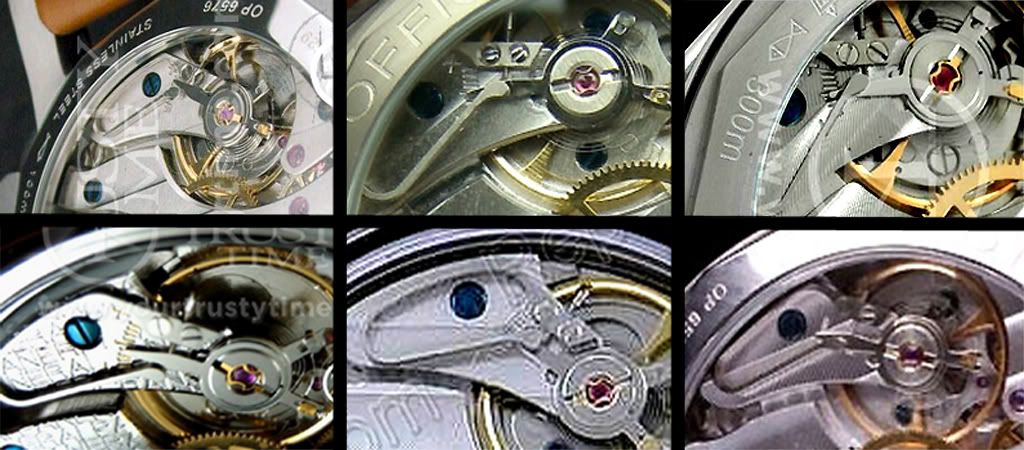
FIGURE 16.B – THE SWAN NECK SPRING DOESN’T REMAIN FLAT AND PASSES OVER THE REGULATOR LEVER RL
In some cases the Swan neck spring passes completely over the regulator lever RL, leaving this lever RL outside the working field of the screw and the Swan Neck spring, as shown in FIGURE 17.

FIGURE 17 – THE REGULATOR LEVER RL IS TOTALLY OUTSIDE THE WORKING FIELD OF THE SCREW MS AND THE SWAN NECK SPRING
In replicas with Swan Neck spring passing over the regulator lever RL, it is not necessary to comment that the Swan Neck device is not functional.
In the replicas studied, until date 20th June 2011, about 6% of them had either the Swan Neck spring or screw Neck MS passing over the regulator lever RL. For this reason, they didn’t have a functional Swan Neck device.
In the last replica series of PAM111-112-177, which came to the market at the end of June 2011, although they do not have a fully working Swan Neck, improvements are observed at this regard, and have fewer faults in manufacturing, assembly and quality control and look more cosmetically correct. We will discuss about that in the Section 17 of this Thread, relating to the fault statistics summary.
12 – UNRELIABILITY OF SWAN NECK DEVICES INSTALLED IN REPLICA WATCHES CAUSED BY AN INSUFFICIENT QUALITY CONTROL
The current production of replicas has improved significantly in last years, but due to the relatively low cost of these replicas, they cannot have Quality Control systems even though similar to those used in the manufacture of original watches. This lack of Quality Control in the selection of materials, processes, assemblies and final results causes a replica unreliability that fans are suffering daily.
Swan Neck device because of its characteristics are greatly affected by this lack of QC and that produces a continuous series of faults in these delicate devices.
That means that we cannot trust the quality and reliability of replica Swan Neck devices. We will add below some new cases that shown the Swan Neck devices unreliability caused for an insufficient QC.
In the FIGURE 18 we can see the image of two replicas of the same replica model (just with different strap) on the right side we see the seemingly correct Swan Neck device, on the right side a device exactly the same but without screw MS, indicating an insufficient QC.

FIGURE 18 – COMPARISON OF TWO REPLICAS OF THE SAME MODEL–THE REPLICA ON THE RIGHT HAS NOT SCREW MS (insufficient QC)
In the FIGURE 14 of Section 11.2 we saw other four replicas with missing screw MS. These defective Swan Neck devices are a very clear lack of QC.
In the FIGURE 19 we see the image of two replicas of the same replica model (just with different strap), on the right side we see a seemingly correct device, on the right side the same replica model, which the Swan Neck spring passes over the regulator lever RL, that again indicates an insufficient QC.
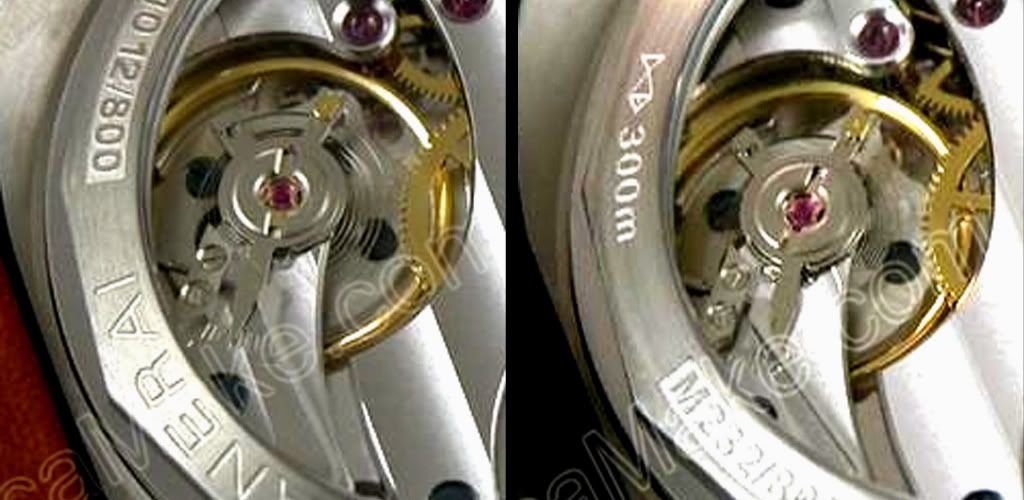
FIGURE 19 – COMPARISON OF TWO REPLICAS OF THE SAME MODEL–IN THE REPLICA ON THE RIGHT THE SWAN NECK SPRING PASSES OVER THE REGULATOR LEVER RL (insufficient QC)
The FIGURE 20 is a curious case taken from a catalogue of very modern replicas. We can see three replicas of the same model (just with three different straps). In the picture on the left we have a seemingly correct Swan Neck device, including screw MS long enough, surely with not enough elasticity of the Swan Neck spring, but cosmetically appropriate. The central picture clearly shows that the Swan Neck spring has not tensile strength enough, lacking elasticity, because the regulator lever RL lever doesn’t reach the tip of the screw MS. In the picture on the right the screw MS is missing (which means another clear example of lack of QC), but the regulator lever RL has not reached the position (+) FASTER, therefore the Swan Neck spring has not tensile strength enough either.
We repeat, three are pictures of the same replica model, just with different straps, from the same modern catalogue of a dealer.

FIGURE 20 – COMPARISON OF THREE REPLICAS OF THE SAME MODEL–IN THE REPLICA ON THE CENTER THE SWAN NECK HAS NOT ENOUGH ELASTICITY, IN THE REPLICA ON THE RIGHT THE SPRING HAS NOT ENOUGH ELASTICITY AND THE SCREW MS IS MISSING (Lack of QC)
The FIGURE 21 shows a replica with the regulator lever RL totally outside the working field of the screw and the Swan Neck spring. This Swan Neck device will never be functional. This is another example of lack of quality control.
This image has already been included in the section of faults, but we are repeating it here because it is also very expressive of a lack of QC.

FIGURE 21– THE REGULATOR LEVER RL IS TOTALLY OUTSIDE THE WORKING FIELD OF THE SCREW MS AND THE SWAN NECK SPRING (Lack of QC)
FIGURE 22 shows another case of Swan Neck device fault in replicas. In this case the horizontal misalignment of the threaded hole for the screw MS. The red line indicates the alignment of the edge of the “Balance Cock” and the yellow one the alignment of the support that incorporates the threaded hole for the screw MS. You can clearly see the alignment differences between the three pictures in the FIGURE 22

FIGURE 22 – HORIZONTAL ALIGNMENT OF THE THREADED HOLE FOR THE SCREW MS IS DIFFERENT FOR THE THREE PICTURES IN THE FIGURE (another type of lack of QC)
We could find more types of faults and unreliability, due to an insufficient QC, in the replica Swan Neck devices, which we must add the faults discussed in previous sections: The lack of elasticity of the Swan Neck spring, screws MS or Swan Neck springs passing over the regulator lever RL and short screws MS.
All of these faults and Quality Control failures lead us to believe that there is a total lack of reliability in the Swan Neck devices installed in replica watches.
So that even if we can find a seemingly fully functional Swan Neck device, we could not assure the maintenance of such functionality in other replicas in which we have installed the same device.
13– THE MAXIMUM THAT WE CAN EXPECT FROM THE SWAN NECK DEVICES INSTALLED IN THE CURRENT REPLICA WATCHES
Replica fans love the replica watches, even we are very satisfied, happy and pleased with them.
But, as we have already said, we must not make a mistake expecting from the replicas something that they cannot give us at their level of price.
We neither can nor must expect from a replica 20 or 100 times less expensive than a gen watch some features as follows:
- Replica copy 1:1 from original watch.
- Movement copy 1:1 from original movement.
- The replica movement is as accurate, precise and reliable as an original movement. Durable for life.
- The same replica watch QC than the original QC.
- After sales service and parts like the original.
- Gold plated durable like the true solid gold of a gen.
- Waterproof guaranteed until a certain depth.
- Fully working special functions and devices like: foudroyante, rattrapante, double chronometer, 8 days of power reserve, Helium valve…
- Some special and expensive materials for case, dials, straps, bezels…
- Some special finishing
- …
- AND WE CANNOT EXPECT FROM A REPLICA WATCH A FULLY WORKING SWAN NECK DEVICE EITHER.
It is practically impossible, from an economic point of view, to install a reliable and fully working Swan Neck device in a current replica watch.
The application of a device of this type, would have an estimate cost between 20% and 25% of the replica total value. And it would require a rigorous QC process, that nowadays would not be profitable or feasible in the world of replica watches manufacturing.
Therefore, don’t try to ask the Swan Neck device of a current replica for something that it cannot offer us.
If we get something more about this in the future, it will be paying a price for it. And, frankly, I think we have to look after more important matters in the replicas world, among other things, the reliability and accuracy of the movements.
The maximum that we can expect from the Swan Neck devices in replicas is shown in FIGURE 23. They are replicas which the regulator lever RL is pressed between the Swan Neck spring and the screw MS, and with a screw MS that has a length covering more than 75-85% of the regulation working field.
Unfortunately, due to the reasoning in the previous Sections of this Thread, the Swan Neck spring will not have enough elasticity, and therefore, the Swan Neck device will be functional just in a small zone of the whole field of regulation.
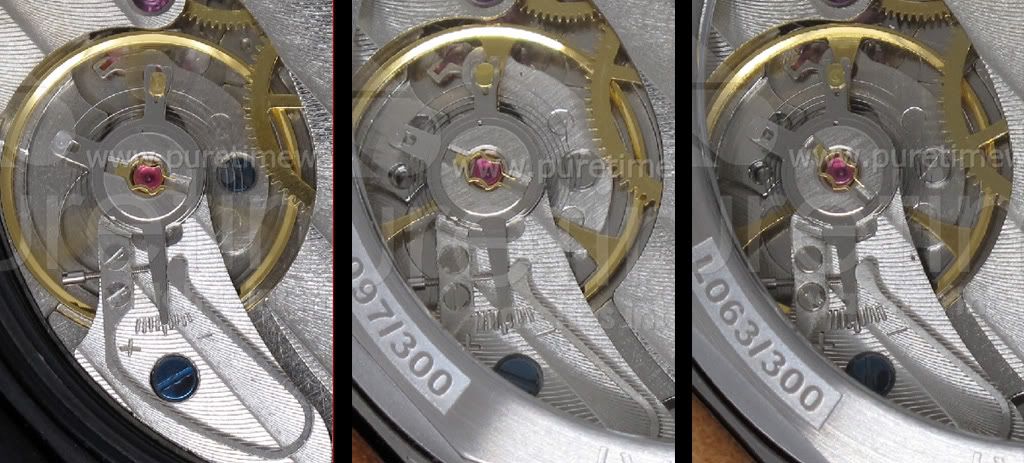
FIGURE 23 - SWAN NECK DEVICES SEEMINGLY FUNCTIONAL IN MORE 75% OF THE REGULATION FIELD. DUE TO THE LACK OF ELASTICITY OF THE SWAN NECK SPRING. THEY WILL BE FUNCTIONAL JUST IN A LITTLE ZONE OF THE WHOLE REGULATION FIELD
15 – HOW CAN WE CHECKING THAT A SWAN NECK DEVICE WORKS PROPERLY ?
WARNING: To verify that a Swan Neck device is working properly we would need to move the screw MS, the Swan Neck spring and the regulator lever RL until the extreme positions (+) FASTER and (-) SLOWER of the regulation field.
Since the Swan Neck spring of a replica, as we have already discussed, has not usually enough elasticity, these displacements can distort the Swan Neck spring and leave it less operative than it was at the beginning of the test. It is also very unlikely to find a fully functional replica Swan Neck device throughout its working field. Thereby, it is not worth to carry out this checking in a replica.
As we have discussed in Section 8 of the Thread Part I, the Swan Neck device has not influence on the performance, reliability and accuracy of the movement. Thus, we must not take risks with an unnecessary verification.
The most wise advice would be not to check the operation of the Swan Neck device of a replica, and just to assume that it cannot be functional throughout its working field, and that it is almost a merely cosmetic and decorative device.
But for those who think: "My replica is unique, I bought it from the dealer XXX which has never let me down, and probably has a Swan Neck perfect" or "I have to see for myself", you can find above the steps to make the checking.
It is relatively easy to verify that a Swan Neck device is working properly. We have just to ensure that the device can carry out the movements indicated in FIGURE 7.A of Thread Part I "From (+) FASTER to (-) SLOWER" and then those of FIGURE 7.B of Thread Part I "From (-) SLOWER to (+) FASTER". The steps are as follows.
1 - To begin with, whatever is the initial position of the regulator lever RL, check that this lever is pressed against the tip of the screw MS by the tensile strength of the Swan Neck spring. If this condition is not achieved in the initial position of the regulator lever RL, we can safely say that the Swan Neck device cannot work properly and we don’t need to continue.
2- After checking OK the above condition, whatever the position in which is situated the regulator lever RL, tighten the screw MS to take the regulator lever RL until the position (-) SLOWER, by the movements shown in the FIGURE 7.A of Thread Part I "From (+) FASTER to (-) SLOWER”.
If the screw MS reaches the end of its length before achieving the position (-) SLOWER, we know already that the device is not functional in the final stage of (-) SLOWER.
As we have clearly seen in Section 11.2 of this Thread, this will happen frequently, because many replicas have the screw MS too short. Some gen watches I have found do not have the screw MS long enough either to reach the end of SLOWER. Therefore we should be a little tolerant at this point and with screw MS over the 80% of the total necessary length, we should consider the Swan Neck device to be completely valid.
3 - From the end of the last position of the screw MS, the nearest possible to (-) SLOWER, we loosen the screw trying to reach the position (+) FASTER.
The Swan Neck spring will push the regulator lever RL against the tip of the screw MS as long as it has enough elasticity. At the moment that the spring no longer push the regulator lever RL against the screw MS, the Swan Neck device will not be yet functional, which is what will happen usually in a replica.
If the Swan Neck spring has pushed the regulator lever RL from the last position of the screw MS, the nearest possible to (-) SLOWER to finish achieving (+) FASTER position, the Swan Neck device will be operative in this zone of the regulation field.
The Swan Neck device will be completely functional if the screw had taken the regulator lever RL until (min 80-85%) the final position (-) SLOWER, and if the Swan Neck spring has pushed the regulator lever RL from (-) SLOWER to finish achieving (+) FASTER position. In this case, congratulations!, mainly, because your watch most probably is a gen!
16 - HOW TO MAKE THE REGULATION ADJUSTMENT IN A MOVEMENT WITH SWAN NECK DEVICE DEFECTIVE OR THAT DOESN’T WORK PROPERLY THROUGHOUT THE REGULATION WORKING FIELD
16.1 - HOW TO MAKE A NORMAL REGULATION ADJUSTMENT
In case you want to adjust the regulation of a movement fitted with a Swan Neck device that is defective or doesn’t work properly throughout its working field, you must proceed as follows:
- If the Swan Neck is operative only in a zone, you can use the Swan Neck device in such working zone.
- In the zone achieved by the micrometer screw MS, you can always use it as a stop for the position of the regulator lever RL, and if the spring doesn’t press the regulator lever RL, you can push it against the tip of the screw MS manually, making by yourself the functions of Swan Neck spring.
- If you have to displace the regulator adjustment to zones where the screw MS cannot arrive or the Swan Neck spring is not operational, it is best if you "open" the Swan Neck distorting it out of the regulation field, beyond the position (-) SLOWER and then adjust the regulator lever RL in the conventional way without Swan Neck.
- If the screw MS or the Swan Neck spring are passing over the regulator lever RL, it is best if you loosen completely the screw MS and to "open" Swan Neck spring distorting it out of the regulation field, beyond the position (-) SLOWER, in order to not hinder the movement of the regulator lever RL. Once cleared the working field you will proceed to adjust the regulator lever RL in the conventional way without Swan Neck.
Once the watch is adjusted, you can leave without problems a no-working Swan Neck device, if it doesn’t hinder the movements of the other mechanisms. You can even place the screw MS and the Swan Neck spring in a position as close as possible to the regulator lever RL, in a cosmetic or decorative way, without affecting the quality, accuracy and reliability of the watch movement.
16.2 - HOW TO MAKE A COSMETIC AND SEMI-FUNCTIONAL REGULATION ADJUSTEMENT
We explain below a system to leave in a cosmetic or decorative and, if possible, semi-functional position a Swan Neck device that is defective or doesn’t work properly throughout its working field.
- Firstly, you must make a simply approximate adjustment, following indications of the last Section 16.1 (just an approximate adjustment no more). You must record, as best as possible, the position of the regulator lever RL in this approximate adjustment before doing this cosmetic adjustment, in order to get back to this position later. If your watch is already regulated just record this regulation position.
In order to can continue with this adjustment system, it is necessary that the replica Swan Neck device has a screw MS long enough to reach, with some margin, the position of the above mentioned approximate adjustment. If the screw MS has not enough length to do it, the cosmetic adjustment will not be possible.
- Loosen the screw MS until the end of position (+) FASTER
- Move manually the regulator lever RL until the end of position (+) FASTER.
- Distort “closing” manually the Swan Neck spring until you get a position as close as possible to the position (+) Faster (assuming that the spring Swan Neck, being no-functional, didn’t have accompanied the lever to the FASTER position)
- From this position, by tightening the screw MS, push the regulator lever RL until it achieves, more or less, the recorded position on the beginning of this process.
Now, you can see that if the screw MS is not long enough, you would not be able to make this cosmetic adjustment.
- Check the watch movement speed and make adjustments by tightening the screw MS to slow down and loosening it to increase the speed. Until you have the watch movement running properly.
- If the Swan Neck spring has a little of elasticity, the regulator lever RL will be located in a zone where the spring will be functional for small regulation displacements. In this way, you will have placed the Swan Neck device in a cosmetic and decorative working position and, besides, semi-functional in the small area where you need it.
17 – SUMMARY OF FAULT PERCENTAGES STATISTIC
We can find below a simple statistic table summarizing the fault percentages of the Swan Neck devices installed in the current replica watches, dated 20th June 2011.
As mentioned above, data were obtained through the observation and study of all PAM replicas fitted by Swan Neck I have been able to see and, mainly, the enlarged pictures of all replicas fitted by Swan Neck (more than 200 replicas) from the catalogues, dated 20th June 2011, of three Trusted Dealers: Puretime, Times Shop y Replicamake (no TD yet) and two no TD: Trusty Time and Kingwatch. I have also studied many replica QC pics.
IMPORTANT FACT:
There are practically the same percentages of faults in both replicas with Asian 6497 movements and replicas with so-called “Swiss Unitas” 6497 movements.
What leads us to suspect a similar origin for the Swan neck devices of both Asian and so-called “Swiss” movements.
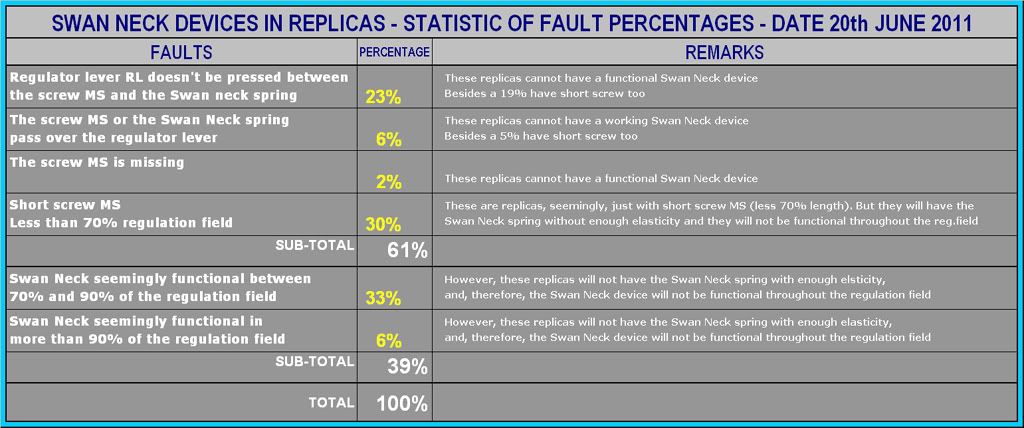
As commented in the beginning, as soon as possible, possibly before the end of this year, I will try to publish the Thread Part III, with a Complete Statistical Analysis of the data from the 200 studied replicas, according to fault types, models, dealers, prices, type of movement (Asian or called “Swiss”) and the future evolution.
I have already all data recorded, in fact I have used them to make the Thread Part I and II, but I need some time to arrange and publish all study in a statistical way, in order to get sound and valid conclusions.
Current Evolution of Swan Neck devices in last replica watches
As we have already discussed, in the last replica series of PAM111-112-177, which came to the market at the end of June 2011, although they do not have a fully working Swan Neck, improvements are observed at this regard, and have fewer faults in manufacturing, assembly and quality control and look more cosmetically correct.
Provisionally, I have studied the 37 PAM replicas with Swan Neck of the QC Replicamake website, from 20 June to 20 August 2011. The short screw MS fault had been very corrected, virtually all replicas had screws MS covering more than 75% of the whole regulation field and many of them came to 80-90%. Only one replica had no screw MS.
In 5 replicas (14%) the regulator lever RL didn’t touch the screw MS, indicating lack of elasticity of the Swan Neck spring. In one replica (3%) the Swan Neck spring passed over the regulator lever RL and just a replica (3%) had no screw MS.
This is a great reduction in the fault of short screw MS and a 35% of other faults reduction. Besides, these replicas were cosmetically more correct than preceding ones.
In the Figure 24 we can observe, however, some examples of the faults observed in this replica series of the last generation.
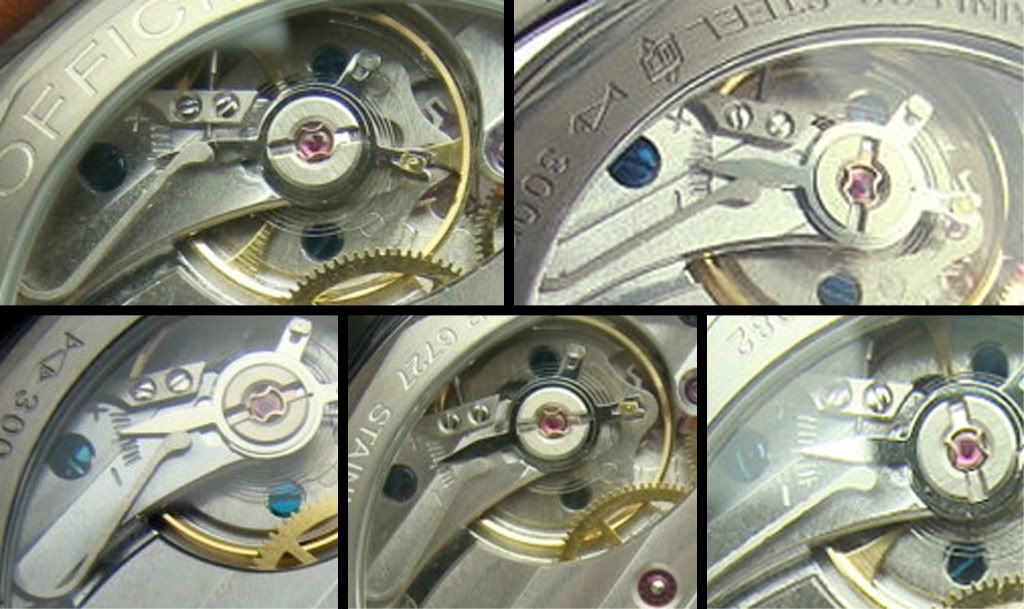
FIGURE 24 – FAULTS IN REPLICAS OF LAST GENERATION (20th June-20th August 2011)
These results are hopeful and we hope they will be confirmed in the future.
But in order to have correct conclusions I want to wait for more information from the new replicas last launchings (from the end June 2011) in order to establish comparisons with the studied replicas until 20th June 2011.
I will publish the results in the next Thread Part III.
This Thread is open. Therefore, I remain, of course, waiting for your comments, corrections, suggestions, discussion… in order to improve it for all people in this forum.
As always, I hope to have been useful and helpful with this Thread.
Many thanks for your kind attention.
ALE7575
*******************************************************
THIS IS AN EXCLUSIVE RWI THREAD
*******************************************************
*******************************************************
This study about SWAN NECK devices in watches will continue with the next Thread Part III:
“SWAN NECK” (Part III)
Statistical Analysis of faults and reliability in replicas
A Complete Statistical Analysis of the data from the 200 studied replicas, according to fault types, models, dealers, prices, type of movement (Asian or called “Swiss”). Comparisons with the last series of replicas. Present and future evolution.
http://forum.replica-watch.info/vb/showthread.php?t=90559
*******************************************************
ATTENTION: If you don’t have DEEP ENOUGH KNOWLEDGE about Swan Neck devices. Before reading this Thread Part II, in order to understand it properly, you should read the Thread Part I:
“SWAN NECK” (Part I)
What is this? How does it work?
A complete technical and theoretical study of the Swan Neck devices installed in watches (gen or replicas)
http://forum.replica-watch.info/vb/showthread.php?t=831645
*******************************************************
“SWAN NECK” (Part II)
Does it work in replicas?
Quality, faults and reliability of the Swan Neck devices installed in replicas. Fault percentages statistic summary.
The data to carry out this Thread Part II has been obtained through the observation and study of all PAM replicas fitted by Swan Neck I have been able to see and, mainly, through the enlarged pictures of all replicas fitted by Swan Neck (more than 200 replicas) from the catalogues, dated 20th June 2011, of three Trusted Dealers: Puretime, Times Shop y Replicamake (no TD yet) and two no TD: Trusty Time and Kingwatch. I have also studied many replica QC pics.
The conclusions obtained by this study of pictures are really interesting and even curious.
By this study I have been able to get a very reliable statistic of the situation, dated 20th June 2011, of the Swan Neck devices installed in the current replicas.
In this Thread Part II, I will carry out the analysis of quality, faults and reliability of the current replicas, bearing in mind this picture study of 200 current replicas and I will also add a summary of fault percentages statistic.
The replicas studied in this Thread Part II are the common commercial replicas with replica movements both Asian clone and so-called “Swiss”,which you can find at the web catalogues of the above mentioned dealers. And you could extend this study to all replica catalogues of all good dealers.
Obviously, if a dealer/maker, like DSN for example, sells a replica fitted with a true and real Swiss movement with a gen Swan Neck, this device will work like an original Swan Neck. But it is necessary that the Swan Neck is authentic gen, it would not be valid a real Swiss movement with a replica Swan Neck, because in this case the Swan Neck will work like a replica device. In the same way in a replica movement fitted with a gen Swan Neck we will have an Swan Neck operative like a gen.
Therefore, when we have installed an authentic gen Swan Neck device in a replica, we can expect a fully working Swan Neck device throughout the regulation field.
Anyway, that will be a very low percentage of the commercial replicas in the market and thus we will focus this study on common replicas above mentioned.
In order to remember the components of a Swan Neck device and a watch regulator as a whole, we are repeating below the FIGURE 4 of the Thread Part I, where a Swan Neck device can be observed (circled in yellow) applied to a conventional regulator (circled in red). In that figure we are indicating the names that we will use over this study.

FIGURE 4 - SWAN NECK DEVICE APPLIED TO A CONVENTIONAL REGULATOR
We must also remember from the Part I the mandatory condition for a functional Swan Neck device as follows:
MANDATORY CONDITION: The regulator lever RL must remain always, throughout its working field, pressed against the tip of the screw MS, due to the pressure made by the Swan Neck spring tensile strength. In this way the established adjustment position is firmly maintained.
NOTE:
The pictures we will show below are almost all enlarged pictures from the catalogues of the 200 replicas studied, also from QC pics and some are from other sources. Therefore, the quality is sometimes not as good as it would be desirable, but they can give good idea of ??what we want to display.
11 – FAULTS OF SWAN NECK DEVICES INSTALLED IN REPLICA WATCHES
Firstly, I want to clarify that this is not a direct attack against the quality of existing replicas or against the replica market. I've always been a big fan of watches, and I don’t buy a gen watch many years ago. I currently only buy replicas. Their quality, bearing in mind the price, is absolutely amazing. I'm really pleased with my replica watches and I think it would not be able to spend a lot of money to buy a gen. I'm a big fan and supporter of replica market.
But, we must not make a mistake expecting from the replicas something that they cannot give us at their level of price.
It is important to note that the faults in Swan Neck devices occur likewise with both Asian 6497 movement and the so-called "Swiss ETA" 6497, and with similar percentages.
This matter will be clearly explained in the Thread Part III devoted to statistical analysis.
We will just talk about the faults to be found in Swan Neck devices fitted in the current replicas. Let’s bear in mind that the regulator must also work properly to combine its function with the Swan Neck device. But the analysis of the regulator is not the purpose of this study. Therefore, we will assume that the regulator is working properly.
11.1 – THE LACK OF ELASTICITY OF THE SWAN NECK SPRING – “THE HIDDEN FAULT”
The lack of elasticity of the Swan Neck spring is the more common fault in the Swan Neck devices of replica watches. We could call it “hidden fault”, because, in many cases and some positions of the regulator lever RL, it cannot be detected and we need to vary the position of the regulation to display the default. But, although it is not visible, the fault exists.
This lack of elasticity of the Swan Neck spring causes that the spring doesn’t have enough tensile strength to assure that the regulator lever RL is always pressed against the tip of the screw MS from the position (-) SLOWER to (+) FAST and backwards.
It is not easy to find a Swan Neck spring in replicas with the necessary elasticity throughout the working fieldof the regulator, and it is very common to find Swan Neck springs that are originally deformed or that have been deformed when they have been pushed to the position (-) SLOWER and they have not been able to return to positions towards (+) FASTER by not having enough elasticity, leaving the regulator lever RL without pressing against the tip of the screw MS. In this way the Swan Neck device leaves to be operational as a whole.
Therefore, we can say that it is very difficult to find a replica Swan Neck spring functional throughout the working regulation field, from (+) FASTER to (-) SLOWER and backwards.
The reasons are simple and are based on the relatively high cost of manufacture, assembly and quality control of an appropriate Swan Neck spring.
Making a high quality Swan Neck spring requires a group of relatively expensive processes (at replica market level) and with very specific special materials.
The Swan Neck spring shall be manufactured from a special alloyed steel for springs. Usually this spring is made from a sheet of this special spring steel like raw material. This sheet has already been drilled with some holes that the spring will need and has already received a tempering thermical treatment, in order to acquire the exact hardness that the spring will need to fulfill its elastic mission with the due capacity of recovery. This sheet of steel cannot be processed by the cheap die-cutting process due to its hardness. A slow and expensive process called “spark erosion” is necessary to “cut” the swan’s neck shape on the hard steel sheet. On the picture below you can see the cutting process of a Swan Neck spring original of GLASHÃœTTE. On the center it is shown the Swan neck spring, on the right the very expensive “spark erosion” machine, on the left some steel sheets after the “spark erosion” process (you can observe the swan’s neck forms in the “cuts”). Once finished the machining process it begins a very delicate hand made process of edges bevelling and surface polishing.

CUTTING PROCESS OF AN ORIGINAL “GLASHÃœTTE” SWAN NECK SPRING BY “SPARK EROSION”

HAND MADE POLISHING OF AN ORIGINAL “GLASHÃœTTE” SWAN NECK
SPRING
This is just the manufacture process but you need also to apply an appropriate assembling process and a quality control accordingly.
The cost of a Swan Neck spring, manufactured and assembled by this process, in Europe or USA can be about the value of a complete high quality replica. In China maybe placed in 20-25% of the whole replica cost. These estimations are obviously approximate.
Usually the Swan Neck springs installed in existing replicas are made ??from standard "stainless steel". Most likely, they are manufactured directly by cheap die-cutting, from a sheet of standard “stainless steel”, with its final form. They cannot receive a tempering because the standard SS does not allow thermical treatments. So the resulting Swan Neck “spring”, really, is not a true spring, but a piece of standard SS with the form of a Swan Neck spring, but without the necessary elasticity to fulfill its mission.
Therefore we cannot expect from the Swan Neck springs installed in the current replicas an elastic operation throughout its working field.
At best, a replica Swan Neck spring could be effective in a 20-35% of the total regulation field. Besides, with few guarantees of working reliability, because if you distort this spring too much, it will not be able to retake its initial shape.
Sometimes this lack of elasticity is easily detected when you are studying Swan Neck devices of replicas either physically or through the pictures from catalogues or QC pics. When the regulator lever RL is not pressed between the tip of the screw MS and the Swan Neck spring, we can say, directly, that the Swan Neck spring tensile strength is not strong enough for this mission.
We can observe four possible positions:
- The regulator lever RL doesn’t touch the screw MS.
- The regulator lever RL doesn’t touch the Swan Neck spring.
- The regulator lever RL doesn’t touch either the screw MS or the Swan neck spring.
- The regulator lever stays pressed correctly between the Swan Neck spring and the tip of the screw MS.
We will analyze bellow the four possible positions:
- The regulator lever RL can stay against the Swan Neck spring, but if this spring has not the tensile strength enough the regulator lever RL will not reach the tip of the screw MS, as shown in the replicas of FIGURES 8.A and 8.B.
VERY IMPORTANT TIP: To quickly see and understand all the pictures shown in this study, we recommend to search directly the regulator lever RL (dagger or needle) and then look at each side what is the position of the Swan Neck spring and the tip of the secrew MS.

FIGURE 8.A – THE REGULATOR LEVER RL DOESN’T TOUCH THE TIP OF THE SCREW MS

FIGURE 8.B - THE REGULATOR LEVER RL DOESN’T TOUCH THE TIP OF THE SCREW MS
- The regulator lever can stay against the tip of the screw MS, but if the Swan Neck spring is distorted, without elasticity, it remain “open”, it has not the tensile strength enough. This spring will not go as far as to reach the regulator lever RL, as shown in the replicas of FIGURE 9

FIGURE 9 - THE SWAN NECK SPRING DOESN’T GO AS FAR AS TO REACH THE REGULATOR LEVER RL
- The regulator lever RL can stay at an intermediate position, touching neither the screw MS nor the Swan neck spring. The Swan Neck spring is distorted, without elasticity, and it remain “open”. This spring will not go as far as to reach the regulator lever RL, and then the regulator lever RL will not touch the tip of the screw MS either. As shown in the replicas of FIGURE 10.

FIGURE 10 - THE REGULATOR LEVER RL DOESN’T TOUCH EITHER THE SCREW MS OR THE SWAN NECK SPRING.
- Finally, the regulator lever RL can stay pressed correctly between the Swan Neck spring and the tip of the screw MS.
Seemingly, that would indicate a fully functional Swan Neck device, but really this is a situation that can not be maintained throughout regulation field from (+) FASTER to (-) SLOWER, due to the low elastic properties of the Swan Neck spring.
This statement can be proved though the observation of many situations like those that we can see below in the FIGURES 11.A, 11.B, 11.C and 11.D
Each of the FIGURES 11 consists of two pictures (left and right) that correspond to the same replica model, from the same catalogue, but just with different straps. Thus, the left and right replicas have the same structure, case, movement, etc…only the strap changes.
However, in these FIGURES 11.A, 11.B, 11.C and 11.D you can see in the picture on the left side a seemingly working Swan Neck device. But the picture on the right side, of the same replica model, shows a Swan Neck spring without elastic properties, which has been distorted and remains “open” with no tensile strength. We can expect that the Swan Neck spring on the left, since it is from the same model of replica, will have the same problem when is pushed to (-) SLOWER, and even that it doesn’t reach (+) FASTER, because doesn’t have enough elasticity.
We repeat: each pair of pictures corresponds to the same replica model, with the same case and movement.
Unfortunately, you can observe this situation very often for the same model of replica.

FIGURE 11.A – COMPARISON OF TWO REPLICAS OF THE SAME MODEL–THE SWAN NECK SPRING HAS NOT ENOUGH ELASTICITY

FIGURE 11.B - COMPARISON OF TWO REPLICAS OF THE SAME MODEL–THE SWAN NECK SPRING HAS NOT ENOUGH ELASTICITY

FIGURE 11.C - COMPARISON OF TWO REPLICAS OF THE SAME MODEL–THE SWAN NECK SPRING HAS NOT ENOUGH ELASTICITY

FIGURE 11.D - COMPARISON OF TWO REPLICAS OF THE SAME MODEL–THE SWAN NECK SPRING HAS NOT ENOUGH ELASTICITY
Therefore, although we can find a seemingly working Swan Neck spring, which is properly pressing the regulator lever RL against the tip of the screw MS, this is an unstable situation, because if you change the regulation position, tightening or loosening the screw MS, in some point the Swan Neck spring will stop working or will become distorted definitively, due to its lack of elasticity.
In the FIGURE 12 it is possible to see other two replicas of the same model. You can see, clearly, in the picture on the left side a seemingly working Swan Neck. But the picture on the right side, of the same replica model, shows that the replica doesn’t have screw MS (another possible fault for lack of QC) and nevertheless the Swan Neck spring, due to not have enough elasticity, has not folded towards the position (+) FASTER that should be the correct working of this spring.

FIGURE 12 - COMPARISON OF TWO REPLICAS OF THE SAME MODEL–THE SWAN NECK SPRING HAS NOT ENOUGH ELASTICITY
To illustrate above mentioned, please read below indiacted posts placed after the publication of this thread:
http://forum.replica-watch.info/vb/showthread.php/thanks-coldi-87007p4
Posts #34-#35-#36-#37
Therefore, due to the used materials and the manufacturing processes and QC applied, we neither can nor must expect that the Swan Neck springs of the current replicas are working throughout the field of regulation necessary. At best, we can expect that they work on 20-35% of the total field.
11.2 - MICROMETRIC SCREW MS WITHOUT SUFFICIENT LENGTH
The micrometric screw MS must have sufficient length to reach the whole working field of the regulator lever RL, and to be able to push this lever from the position (+) FASTER to the position (-) SLOWER.
In the replicas studied, to date 20th June 2011, only 6% approx. of the replies had a screw MS functional in more than 90% of the whole regulation field, 36% approx. had a screw MS valid between 70-90 % of the whole field. 56% approx. had a screw MS so short that was operative in less than 70% of the whole regulation field and 2% approx. didn’t have screw MS.
In the last replica series of PAM111-112-177, which came to the market at the end of June 2011, although they do not have a fully working Swan Neck, improvements are observed at this regard, and have screws MS that come almost always to more than 75 % of the whole regulation field and many of them overcome 80-90 % and look more cosmetically correct(despite the fact that Puretime has in its catalogue all the new replicas PAM111 with the same movement picture and with short screw MS). We will discuss about that in the Section 17 of this Thread, relating to the fault statistics summary.
Several examples of screw MS without sufficient length can be seen in the FIGURES 13.A and 13. B, in these figures you can observe that despite the screw MS is tightened to the maximum the regulator lever RL doesn’t reach the position (-) SLOWER.

FIGURE 13.A - SWAN NECK DEVICES WITH MICROMETRIC SCREW WITHOUT SUFFICIENT LENGTH

FIGURE 13.B - SWAN NECK DEVICES WITH MICROMETRIC SCREW WITHOUT SUFFICIENT LENGTH
In the FIGURE 13.C we can see a replica watch which Swan Neck device has a screw MS extremely short

FIGURE 13.C - SWAN NECK DEVICE WITH MICROMETRIC SCREW EXTREMELY SHORT
ATTENTION: As we have already advanced previously, in some replicas (aprox. 2 %) is even possible that the screw MS is missing, surely by mistake or lack of QC. You can observe this fault in the four pictures of the FIGURE 14.
In replicas without micrometric screw MS it is not necessary to comment that the Swan Neck device is purely cosmetic.

FIGURE 14 - SWAN NECK DEVICES WITH MISSING MICROMETRIC SCREW
11.3 – THE THREADED HOLE FOR THE SCREW MS IS NOT ALIGNED PARALLEL TO THE SURFACE OF THE "BALANCE COCK"
The threaded hole to insert the screw MS must be well aligned, parallel to the surface of the "Balance Cock". Because if the threaded hole is pointing upwards, the screw MS will pass over the regulator lever RL, and will not be able to exert its push mission. And if the threaded hole is pointing downwards, the screw MS will sink to the surface of the "Balance Cock".
In the replicas we can find misaligned screws MS that pass over the regulator lever RL. In the FIGURE 15.A we can observe two cases of misaligned screws, not parallel to the "Balance Cock", which point upwards. In the picture on the right side the screw MS are passing over the regulator lever RL, instead of pushing it. In the picture on the left side, you can see the marks of the misaligned thread through the material of the support of the threaded hole, the screw MS is not yet passing over the regulator lever RL, because it is completely loosened, but when the screw MS is tightened, it will advance and will pass over the regulator lever RL, in the same way that happens in the picture on the right side.

FIGURE 15.A - MISALIGNED SCREWS MS, NOT PARALLEL TO THE "BALANCE COCK" (in the picture on the right side the screw MS is already passing over the regulator lever RL)
In the FIGURE 15.B we are showing two new cases of misaligned screw MS which passes over the regulator lever RL

FIGURE 15.B - MISALIGNED SCREWS MS, NOT PARALLEL TO THE "BALANCE COCK" (the screws MS pass over the regulator lever RL)
In replicas with micrometric screw MS passing over the regulator lever RL, it is not necessary to comment that the Swan Neck device is not functional.
11.4 – THE SWAN NECK SPRING DOESN’T REMAIN COMPLETELY FLAT AND DETACHS FROM THE "BALANCE COCK" SURFACE.
The Swan Neck spring must remain completely flat and not to detach from the surface of the "Balance Cock". If the Swan Neck spring doesn’t remain flat, can pass over the regulator lever RL. In this way it will not able to perform its pushing function and will not allow the regulation adjustment.
In the replicas can be found such situations, as shown in FIGURES 16.A and 16.B.

FIGURE 16.A – THE SWAN NECK SPRING DOESN’T REMAIN FLAT AND PASSES OVER THE REGULATOR LEVER RL

FIGURE 16.B – THE SWAN NECK SPRING DOESN’T REMAIN FLAT AND PASSES OVER THE REGULATOR LEVER RL
In some cases the Swan neck spring passes completely over the regulator lever RL, leaving this lever RL outside the working field of the screw and the Swan Neck spring, as shown in FIGURE 17.

FIGURE 17 – THE REGULATOR LEVER RL IS TOTALLY OUTSIDE THE WORKING FIELD OF THE SCREW MS AND THE SWAN NECK SPRING
In replicas with Swan Neck spring passing over the regulator lever RL, it is not necessary to comment that the Swan Neck device is not functional.
In the replicas studied, until date 20th June 2011, about 6% of them had either the Swan Neck spring or screw Neck MS passing over the regulator lever RL. For this reason, they didn’t have a functional Swan Neck device.
In the last replica series of PAM111-112-177, which came to the market at the end of June 2011, although they do not have a fully working Swan Neck, improvements are observed at this regard, and have fewer faults in manufacturing, assembly and quality control and look more cosmetically correct. We will discuss about that in the Section 17 of this Thread, relating to the fault statistics summary.
12 – UNRELIABILITY OF SWAN NECK DEVICES INSTALLED IN REPLICA WATCHES CAUSED BY AN INSUFFICIENT QUALITY CONTROL
The current production of replicas has improved significantly in last years, but due to the relatively low cost of these replicas, they cannot have Quality Control systems even though similar to those used in the manufacture of original watches. This lack of Quality Control in the selection of materials, processes, assemblies and final results causes a replica unreliability that fans are suffering daily.
Swan Neck device because of its characteristics are greatly affected by this lack of QC and that produces a continuous series of faults in these delicate devices.
That means that we cannot trust the quality and reliability of replica Swan Neck devices. We will add below some new cases that shown the Swan Neck devices unreliability caused for an insufficient QC.
In the FIGURE 18 we can see the image of two replicas of the same replica model (just with different strap) on the right side we see the seemingly correct Swan Neck device, on the right side a device exactly the same but without screw MS, indicating an insufficient QC.

FIGURE 18 – COMPARISON OF TWO REPLICAS OF THE SAME MODEL–THE REPLICA ON THE RIGHT HAS NOT SCREW MS (insufficient QC)
In the FIGURE 14 of Section 11.2 we saw other four replicas with missing screw MS. These defective Swan Neck devices are a very clear lack of QC.
In the FIGURE 19 we see the image of two replicas of the same replica model (just with different strap), on the right side we see a seemingly correct device, on the right side the same replica model, which the Swan Neck spring passes over the regulator lever RL, that again indicates an insufficient QC.

FIGURE 19 – COMPARISON OF TWO REPLICAS OF THE SAME MODEL–IN THE REPLICA ON THE RIGHT THE SWAN NECK SPRING PASSES OVER THE REGULATOR LEVER RL (insufficient QC)
The FIGURE 20 is a curious case taken from a catalogue of very modern replicas. We can see three replicas of the same model (just with three different straps). In the picture on the left we have a seemingly correct Swan Neck device, including screw MS long enough, surely with not enough elasticity of the Swan Neck spring, but cosmetically appropriate. The central picture clearly shows that the Swan Neck spring has not tensile strength enough, lacking elasticity, because the regulator lever RL lever doesn’t reach the tip of the screw MS. In the picture on the right the screw MS is missing (which means another clear example of lack of QC), but the regulator lever RL has not reached the position (+) FASTER, therefore the Swan Neck spring has not tensile strength enough either.
We repeat, three are pictures of the same replica model, just with different straps, from the same modern catalogue of a dealer.

FIGURE 20 – COMPARISON OF THREE REPLICAS OF THE SAME MODEL–IN THE REPLICA ON THE CENTER THE SWAN NECK HAS NOT ENOUGH ELASTICITY, IN THE REPLICA ON THE RIGHT THE SPRING HAS NOT ENOUGH ELASTICITY AND THE SCREW MS IS MISSING (Lack of QC)
The FIGURE 21 shows a replica with the regulator lever RL totally outside the working field of the screw and the Swan Neck spring. This Swan Neck device will never be functional. This is another example of lack of quality control.
This image has already been included in the section of faults, but we are repeating it here because it is also very expressive of a lack of QC.

FIGURE 21– THE REGULATOR LEVER RL IS TOTALLY OUTSIDE THE WORKING FIELD OF THE SCREW MS AND THE SWAN NECK SPRING (Lack of QC)
FIGURE 22 shows another case of Swan Neck device fault in replicas. In this case the horizontal misalignment of the threaded hole for the screw MS. The red line indicates the alignment of the edge of the “Balance Cock” and the yellow one the alignment of the support that incorporates the threaded hole for the screw MS. You can clearly see the alignment differences between the three pictures in the FIGURE 22

FIGURE 22 – HORIZONTAL ALIGNMENT OF THE THREADED HOLE FOR THE SCREW MS IS DIFFERENT FOR THE THREE PICTURES IN THE FIGURE (another type of lack of QC)
We could find more types of faults and unreliability, due to an insufficient QC, in the replica Swan Neck devices, which we must add the faults discussed in previous sections: The lack of elasticity of the Swan Neck spring, screws MS or Swan Neck springs passing over the regulator lever RL and short screws MS.
All of these faults and Quality Control failures lead us to believe that there is a total lack of reliability in the Swan Neck devices installed in replica watches.
So that even if we can find a seemingly fully functional Swan Neck device, we could not assure the maintenance of such functionality in other replicas in which we have installed the same device.
13– THE MAXIMUM THAT WE CAN EXPECT FROM THE SWAN NECK DEVICES INSTALLED IN THE CURRENT REPLICA WATCHES
Replica fans love the replica watches, even we are very satisfied, happy and pleased with them.
But, as we have already said, we must not make a mistake expecting from the replicas something that they cannot give us at their level of price.
We neither can nor must expect from a replica 20 or 100 times less expensive than a gen watch some features as follows:
- Replica copy 1:1 from original watch.
- Movement copy 1:1 from original movement.
- The replica movement is as accurate, precise and reliable as an original movement. Durable for life.
- The same replica watch QC than the original QC.
- After sales service and parts like the original.
- Gold plated durable like the true solid gold of a gen.
- Waterproof guaranteed until a certain depth.
- Fully working special functions and devices like: foudroyante, rattrapante, double chronometer, 8 days of power reserve, Helium valve…
- Some special and expensive materials for case, dials, straps, bezels…
- Some special finishing
- …
- AND WE CANNOT EXPECT FROM A REPLICA WATCH A FULLY WORKING SWAN NECK DEVICE EITHER.
It is practically impossible, from an economic point of view, to install a reliable and fully working Swan Neck device in a current replica watch.
The application of a device of this type, would have an estimate cost between 20% and 25% of the replica total value. And it would require a rigorous QC process, that nowadays would not be profitable or feasible in the world of replica watches manufacturing.
Therefore, don’t try to ask the Swan Neck device of a current replica for something that it cannot offer us.
If we get something more about this in the future, it will be paying a price for it. And, frankly, I think we have to look after more important matters in the replicas world, among other things, the reliability and accuracy of the movements.
The maximum that we can expect from the Swan Neck devices in replicas is shown in FIGURE 23. They are replicas which the regulator lever RL is pressed between the Swan Neck spring and the screw MS, and with a screw MS that has a length covering more than 75-85% of the regulation working field.
Unfortunately, due to the reasoning in the previous Sections of this Thread, the Swan Neck spring will not have enough elasticity, and therefore, the Swan Neck device will be functional just in a small zone of the whole field of regulation.

FIGURE 23 - SWAN NECK DEVICES SEEMINGLY FUNCTIONAL IN MORE 75% OF THE REGULATION FIELD. DUE TO THE LACK OF ELASTICITY OF THE SWAN NECK SPRING. THEY WILL BE FUNCTIONAL JUST IN A LITTLE ZONE OF THE WHOLE REGULATION FIELD
15 – HOW CAN WE CHECKING THAT A SWAN NECK DEVICE WORKS PROPERLY ?
WARNING: To verify that a Swan Neck device is working properly we would need to move the screw MS, the Swan Neck spring and the regulator lever RL until the extreme positions (+) FASTER and (-) SLOWER of the regulation field.
Since the Swan Neck spring of a replica, as we have already discussed, has not usually enough elasticity, these displacements can distort the Swan Neck spring and leave it less operative than it was at the beginning of the test. It is also very unlikely to find a fully functional replica Swan Neck device throughout its working field. Thereby, it is not worth to carry out this checking in a replica.
As we have discussed in Section 8 of the Thread Part I, the Swan Neck device has not influence on the performance, reliability and accuracy of the movement. Thus, we must not take risks with an unnecessary verification.
The most wise advice would be not to check the operation of the Swan Neck device of a replica, and just to assume that it cannot be functional throughout its working field, and that it is almost a merely cosmetic and decorative device.
But for those who think: "My replica is unique, I bought it from the dealer XXX which has never let me down, and probably has a Swan Neck perfect" or "I have to see for myself", you can find above the steps to make the checking.
It is relatively easy to verify that a Swan Neck device is working properly. We have just to ensure that the device can carry out the movements indicated in FIGURE 7.A of Thread Part I "From (+) FASTER to (-) SLOWER" and then those of FIGURE 7.B of Thread Part I "From (-) SLOWER to (+) FASTER". The steps are as follows.
1 - To begin with, whatever is the initial position of the regulator lever RL, check that this lever is pressed against the tip of the screw MS by the tensile strength of the Swan Neck spring. If this condition is not achieved in the initial position of the regulator lever RL, we can safely say that the Swan Neck device cannot work properly and we don’t need to continue.
2- After checking OK the above condition, whatever the position in which is situated the regulator lever RL, tighten the screw MS to take the regulator lever RL until the position (-) SLOWER, by the movements shown in the FIGURE 7.A of Thread Part I "From (+) FASTER to (-) SLOWER”.
If the screw MS reaches the end of its length before achieving the position (-) SLOWER, we know already that the device is not functional in the final stage of (-) SLOWER.
As we have clearly seen in Section 11.2 of this Thread, this will happen frequently, because many replicas have the screw MS too short. Some gen watches I have found do not have the screw MS long enough either to reach the end of SLOWER. Therefore we should be a little tolerant at this point and with screw MS over the 80% of the total necessary length, we should consider the Swan Neck device to be completely valid.
3 - From the end of the last position of the screw MS, the nearest possible to (-) SLOWER, we loosen the screw trying to reach the position (+) FASTER.
The Swan Neck spring will push the regulator lever RL against the tip of the screw MS as long as it has enough elasticity. At the moment that the spring no longer push the regulator lever RL against the screw MS, the Swan Neck device will not be yet functional, which is what will happen usually in a replica.
If the Swan Neck spring has pushed the regulator lever RL from the last position of the screw MS, the nearest possible to (-) SLOWER to finish achieving (+) FASTER position, the Swan Neck device will be operative in this zone of the regulation field.
The Swan Neck device will be completely functional if the screw had taken the regulator lever RL until (min 80-85%) the final position (-) SLOWER, and if the Swan Neck spring has pushed the regulator lever RL from (-) SLOWER to finish achieving (+) FASTER position. In this case, congratulations!, mainly, because your watch most probably is a gen!
16 - HOW TO MAKE THE REGULATION ADJUSTMENT IN A MOVEMENT WITH SWAN NECK DEVICE DEFECTIVE OR THAT DOESN’T WORK PROPERLY THROUGHOUT THE REGULATION WORKING FIELD
16.1 - HOW TO MAKE A NORMAL REGULATION ADJUSTMENT
In case you want to adjust the regulation of a movement fitted with a Swan Neck device that is defective or doesn’t work properly throughout its working field, you must proceed as follows:
- If the Swan Neck is operative only in a zone, you can use the Swan Neck device in such working zone.
- In the zone achieved by the micrometer screw MS, you can always use it as a stop for the position of the regulator lever RL, and if the spring doesn’t press the regulator lever RL, you can push it against the tip of the screw MS manually, making by yourself the functions of Swan Neck spring.
- If you have to displace the regulator adjustment to zones where the screw MS cannot arrive or the Swan Neck spring is not operational, it is best if you "open" the Swan Neck distorting it out of the regulation field, beyond the position (-) SLOWER and then adjust the regulator lever RL in the conventional way without Swan Neck.
- If the screw MS or the Swan Neck spring are passing over the regulator lever RL, it is best if you loosen completely the screw MS and to "open" Swan Neck spring distorting it out of the regulation field, beyond the position (-) SLOWER, in order to not hinder the movement of the regulator lever RL. Once cleared the working field you will proceed to adjust the regulator lever RL in the conventional way without Swan Neck.
Once the watch is adjusted, you can leave without problems a no-working Swan Neck device, if it doesn’t hinder the movements of the other mechanisms. You can even place the screw MS and the Swan Neck spring in a position as close as possible to the regulator lever RL, in a cosmetic or decorative way, without affecting the quality, accuracy and reliability of the watch movement.
16.2 - HOW TO MAKE A COSMETIC AND SEMI-FUNCTIONAL REGULATION ADJUSTEMENT
We explain below a system to leave in a cosmetic or decorative and, if possible, semi-functional position a Swan Neck device that is defective or doesn’t work properly throughout its working field.
- Firstly, you must make a simply approximate adjustment, following indications of the last Section 16.1 (just an approximate adjustment no more). You must record, as best as possible, the position of the regulator lever RL in this approximate adjustment before doing this cosmetic adjustment, in order to get back to this position later. If your watch is already regulated just record this regulation position.
In order to can continue with this adjustment system, it is necessary that the replica Swan Neck device has a screw MS long enough to reach, with some margin, the position of the above mentioned approximate adjustment. If the screw MS has not enough length to do it, the cosmetic adjustment will not be possible.
- Loosen the screw MS until the end of position (+) FASTER
- Move manually the regulator lever RL until the end of position (+) FASTER.
- Distort “closing” manually the Swan Neck spring until you get a position as close as possible to the position (+) Faster (assuming that the spring Swan Neck, being no-functional, didn’t have accompanied the lever to the FASTER position)
- From this position, by tightening the screw MS, push the regulator lever RL until it achieves, more or less, the recorded position on the beginning of this process.
Now, you can see that if the screw MS is not long enough, you would not be able to make this cosmetic adjustment.
- Check the watch movement speed and make adjustments by tightening the screw MS to slow down and loosening it to increase the speed. Until you have the watch movement running properly.
- If the Swan Neck spring has a little of elasticity, the regulator lever RL will be located in a zone where the spring will be functional for small regulation displacements. In this way, you will have placed the Swan Neck device in a cosmetic and decorative working position and, besides, semi-functional in the small area where you need it.
17 – SUMMARY OF FAULT PERCENTAGES STATISTIC
We can find below a simple statistic table summarizing the fault percentages of the Swan Neck devices installed in the current replica watches, dated 20th June 2011.
As mentioned above, data were obtained through the observation and study of all PAM replicas fitted by Swan Neck I have been able to see and, mainly, the enlarged pictures of all replicas fitted by Swan Neck (more than 200 replicas) from the catalogues, dated 20th June 2011, of three Trusted Dealers: Puretime, Times Shop y Replicamake (no TD yet) and two no TD: Trusty Time and Kingwatch. I have also studied many replica QC pics.
IMPORTANT FACT:
There are practically the same percentages of faults in both replicas with Asian 6497 movements and replicas with so-called “Swiss Unitas” 6497 movements.
What leads us to suspect a similar origin for the Swan neck devices of both Asian and so-called “Swiss” movements.

As commented in the beginning, as soon as possible, possibly before the end of this year, I will try to publish the Thread Part III, with a Complete Statistical Analysis of the data from the 200 studied replicas, according to fault types, models, dealers, prices, type of movement (Asian or called “Swiss”) and the future evolution.
I have already all data recorded, in fact I have used them to make the Thread Part I and II, but I need some time to arrange and publish all study in a statistical way, in order to get sound and valid conclusions.
Current Evolution of Swan Neck devices in last replica watches
As we have already discussed, in the last replica series of PAM111-112-177, which came to the market at the end of June 2011, although they do not have a fully working Swan Neck, improvements are observed at this regard, and have fewer faults in manufacturing, assembly and quality control and look more cosmetically correct.
Provisionally, I have studied the 37 PAM replicas with Swan Neck of the QC Replicamake website, from 20 June to 20 August 2011. The short screw MS fault had been very corrected, virtually all replicas had screws MS covering more than 75% of the whole regulation field and many of them came to 80-90%. Only one replica had no screw MS.
In 5 replicas (14%) the regulator lever RL didn’t touch the screw MS, indicating lack of elasticity of the Swan Neck spring. In one replica (3%) the Swan Neck spring passed over the regulator lever RL and just a replica (3%) had no screw MS.
This is a great reduction in the fault of short screw MS and a 35% of other faults reduction. Besides, these replicas were cosmetically more correct than preceding ones.
In the Figure 24 we can observe, however, some examples of the faults observed in this replica series of the last generation.

FIGURE 24 – FAULTS IN REPLICAS OF LAST GENERATION (20th June-20th August 2011)
These results are hopeful and we hope they will be confirmed in the future.
But in order to have correct conclusions I want to wait for more information from the new replicas last launchings (from the end June 2011) in order to establish comparisons with the studied replicas until 20th June 2011.
I will publish the results in the next Thread Part III.
This Thread is open. Therefore, I remain, of course, waiting for your comments, corrections, suggestions, discussion… in order to improve it for all people in this forum.
As always, I hope to have been useful and helpful with this Thread.
Many thanks for your kind attention.
ALE7575
*******************************************************
THIS IS AN EXCLUSIVE RWI THREAD
*******************************************************
*******************************************************
This study about SWAN NECK devices in watches will continue with the next Thread Part III:
“SWAN NECK” (Part III)
Statistical Analysis of faults and reliability in replicas
A Complete Statistical Analysis of the data from the 200 studied replicas, according to fault types, models, dealers, prices, type of movement (Asian or called “Swiss”). Comparisons with the last series of replicas. Present and future evolution.
http://forum.replica-watch.info/vb/showthread.php?t=90559
*******************************************************
